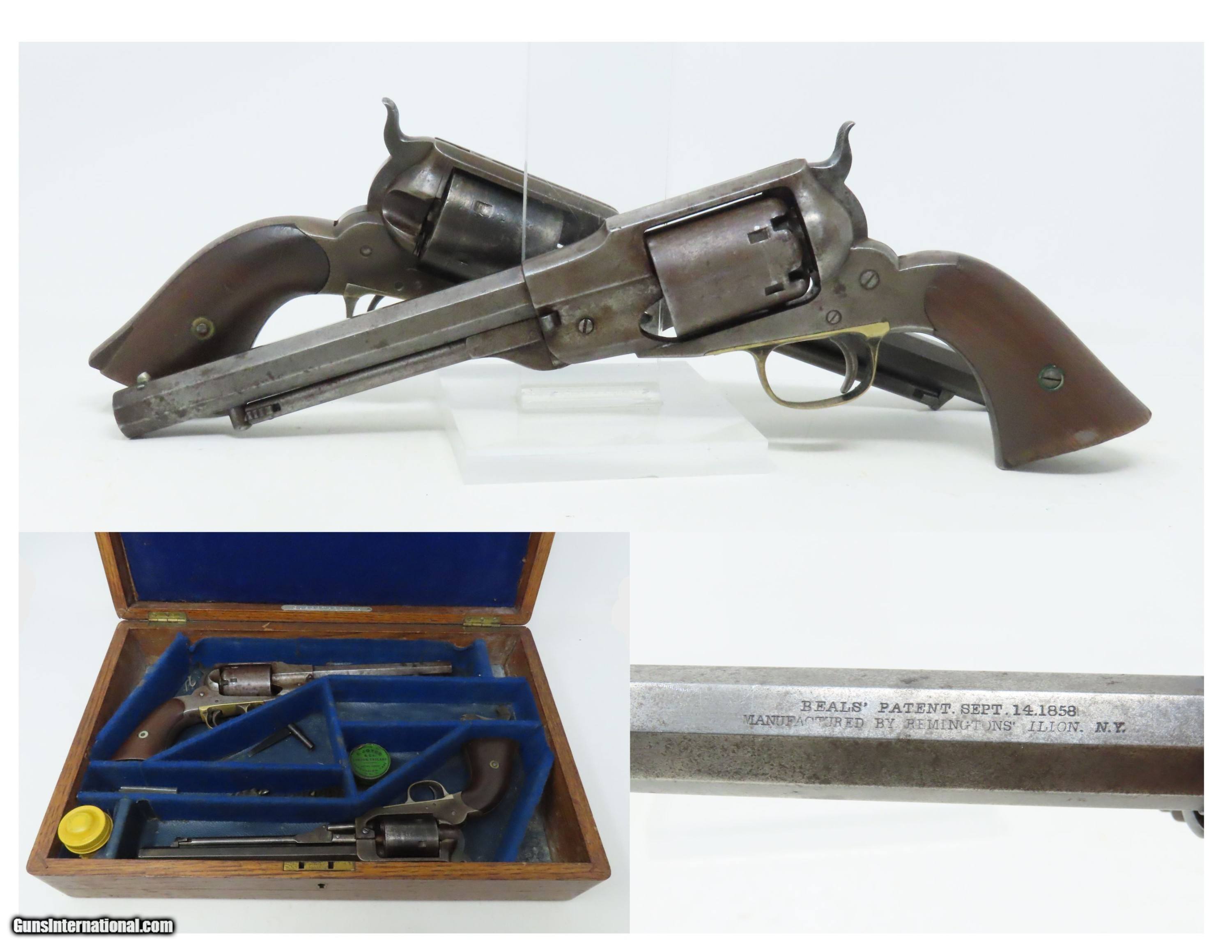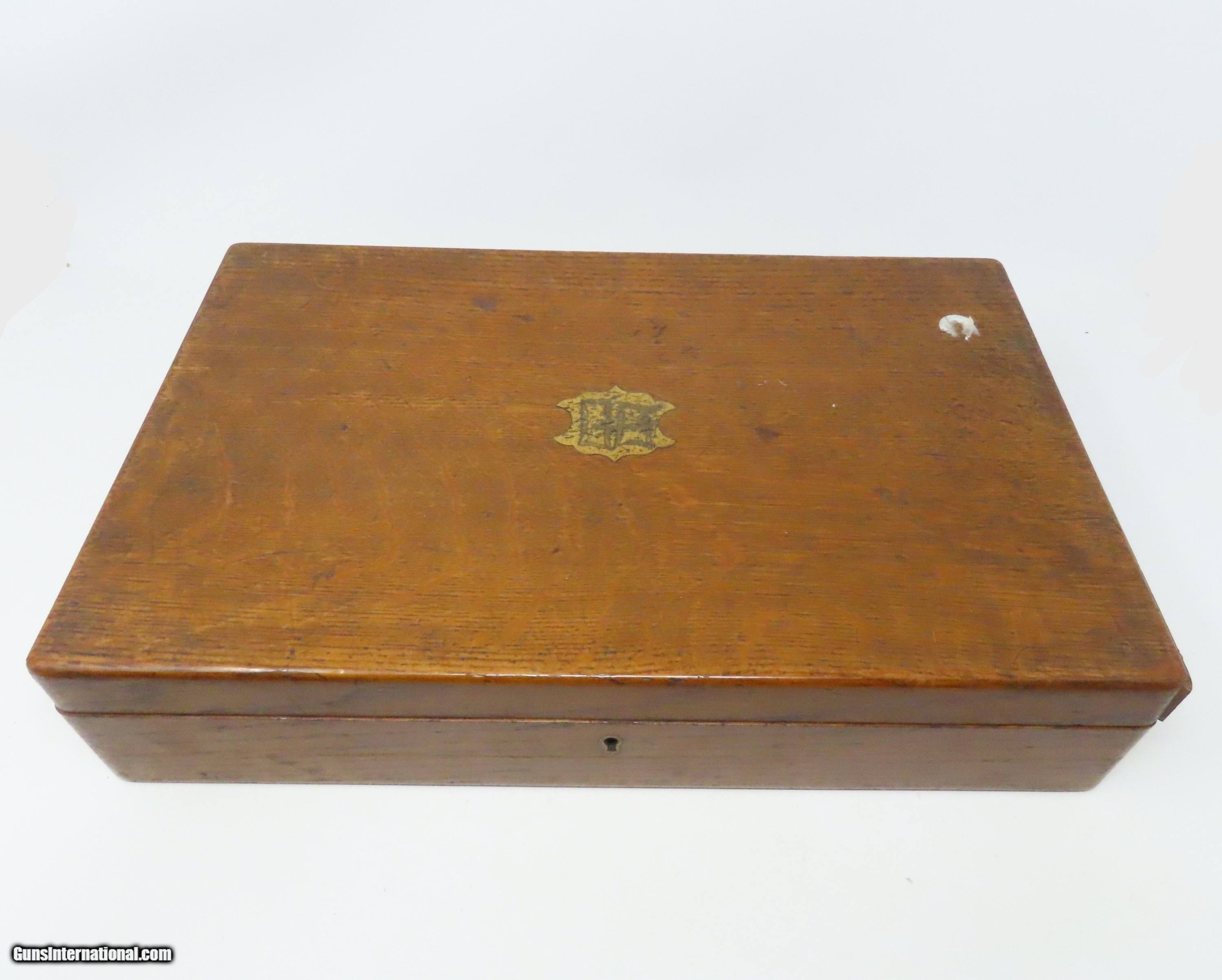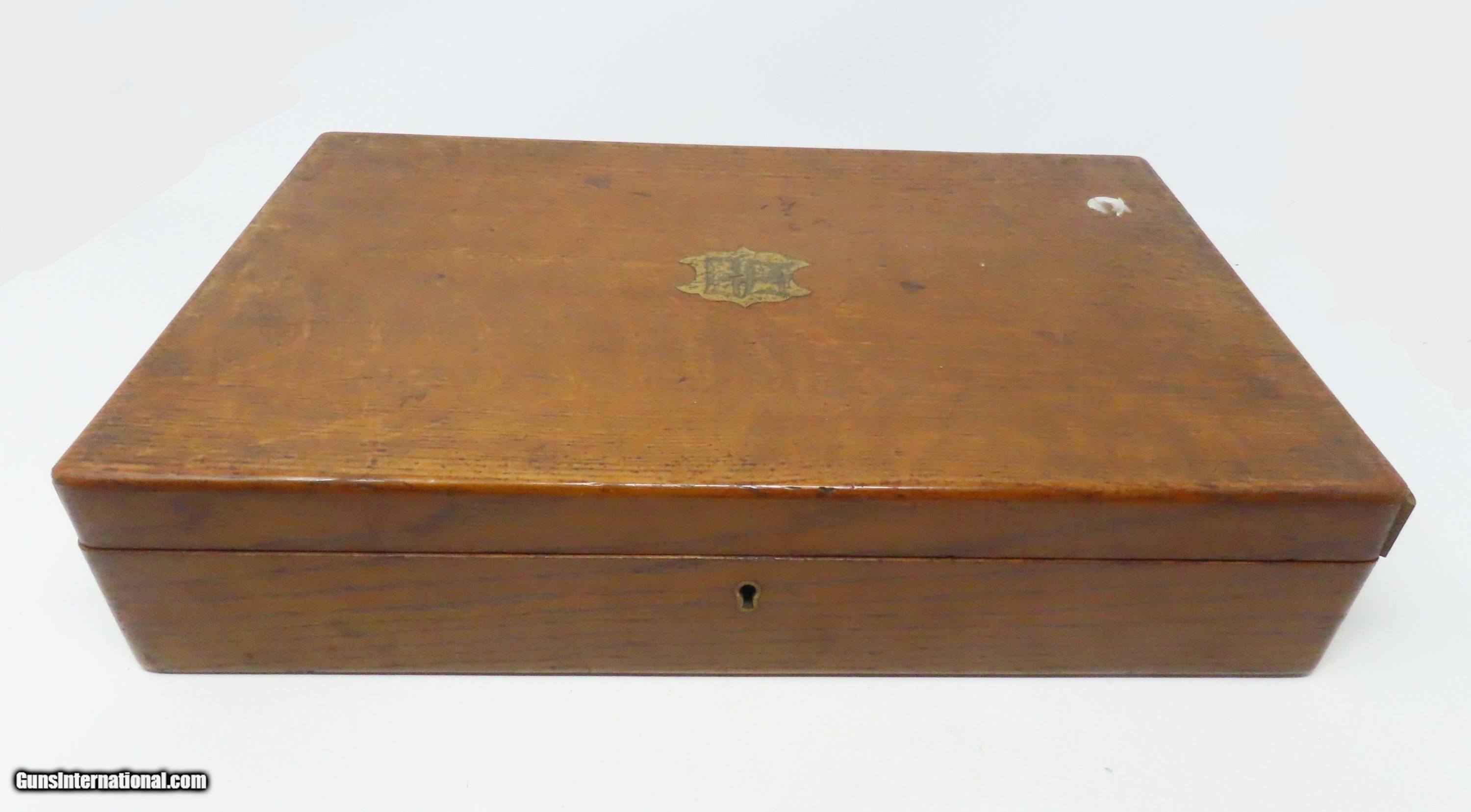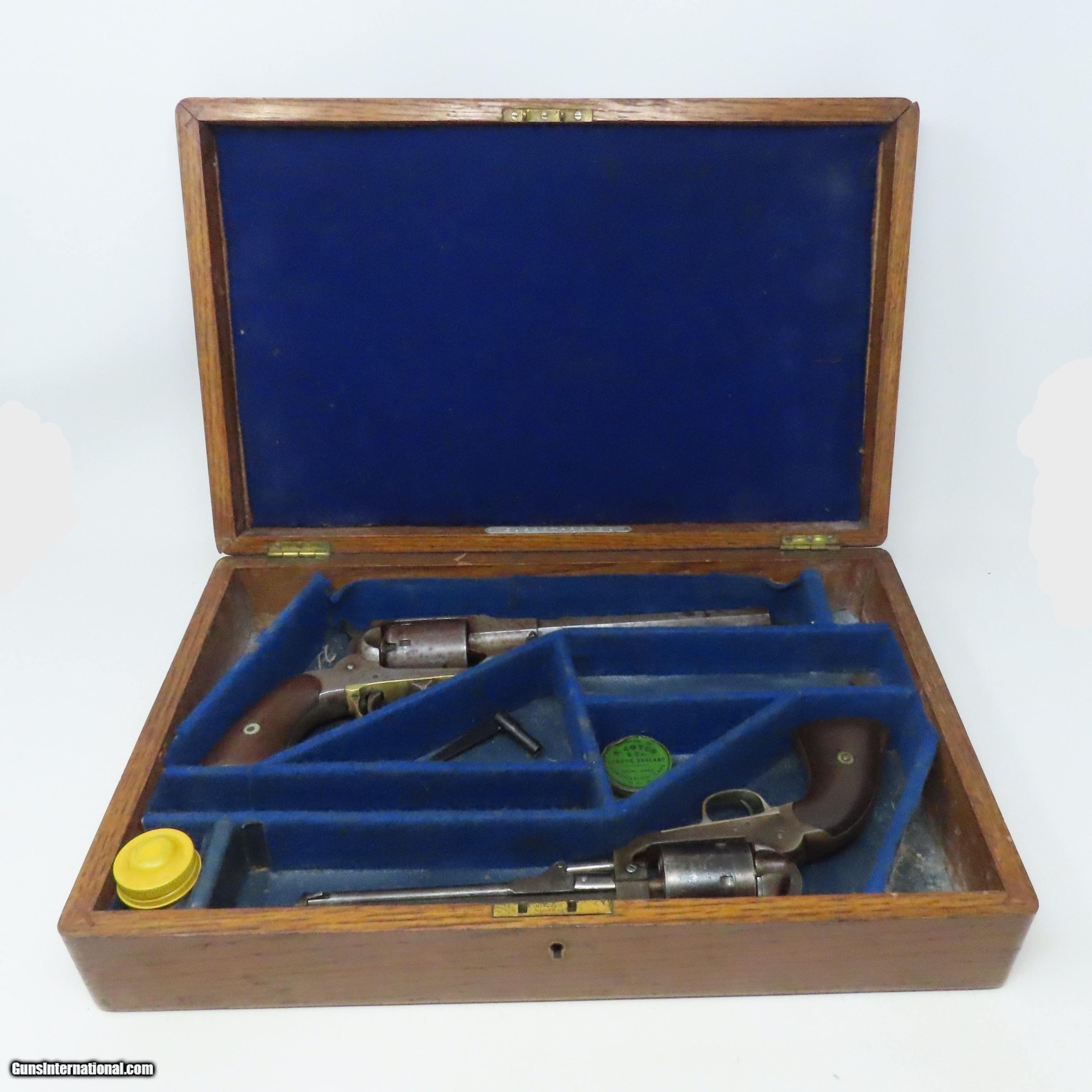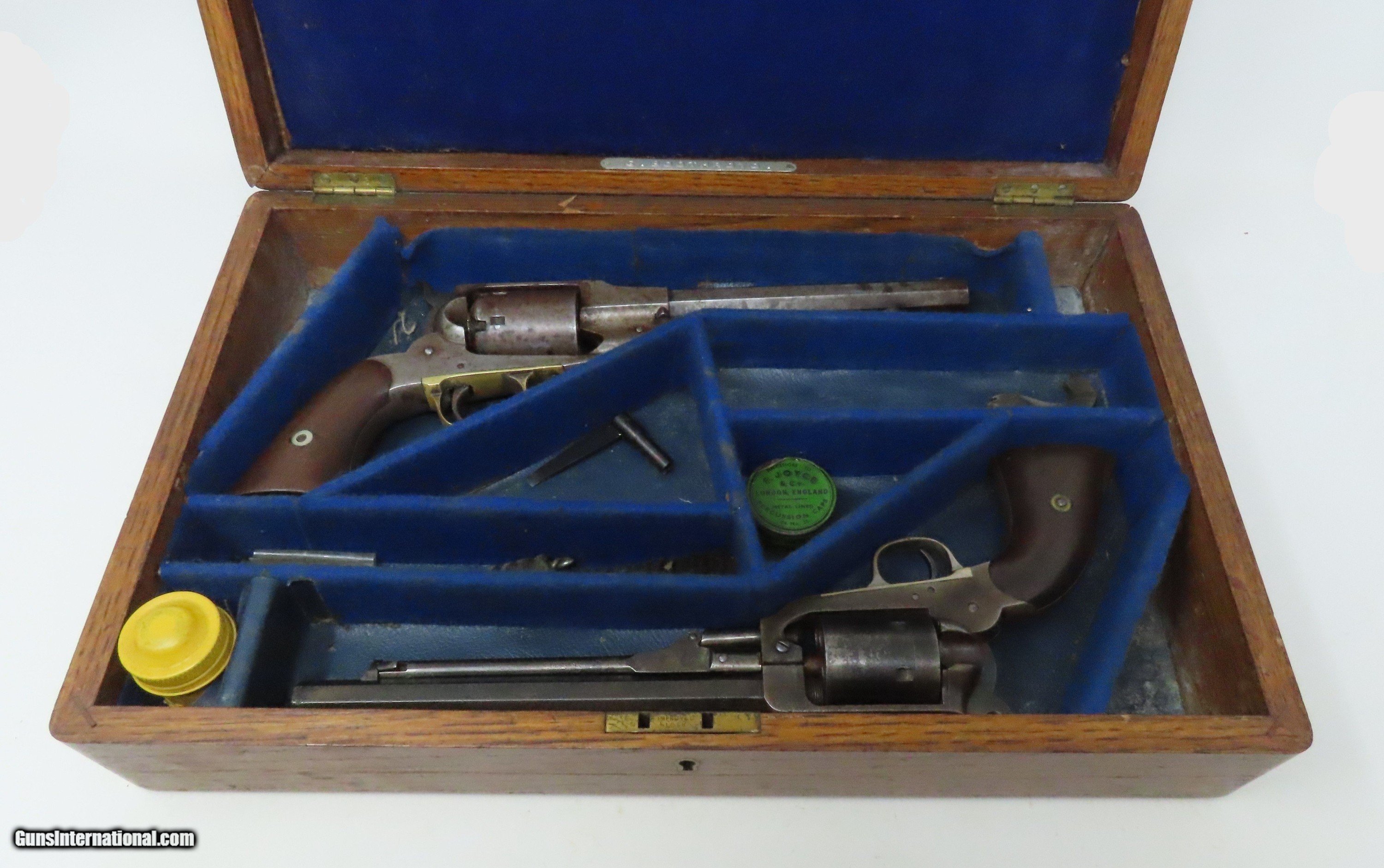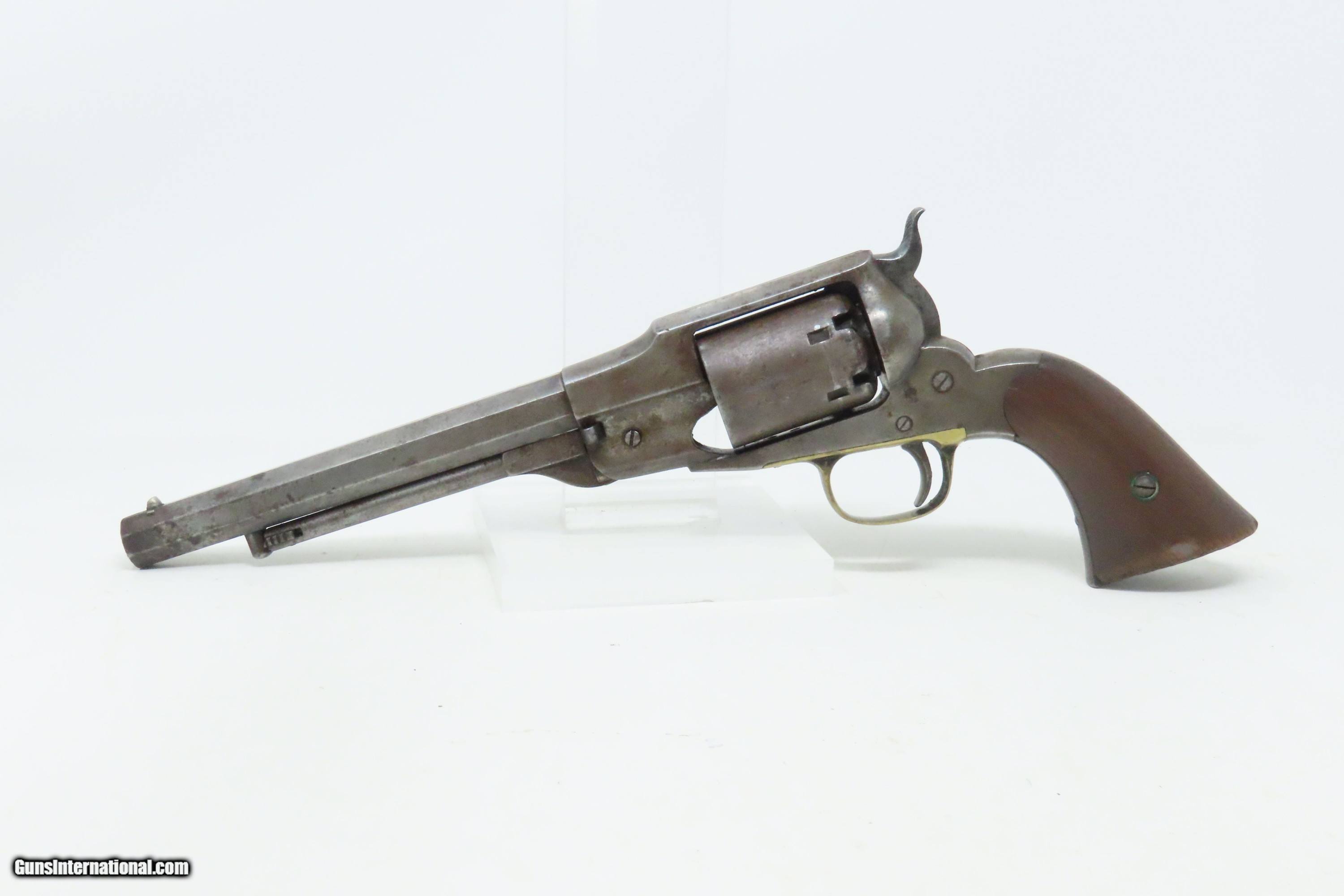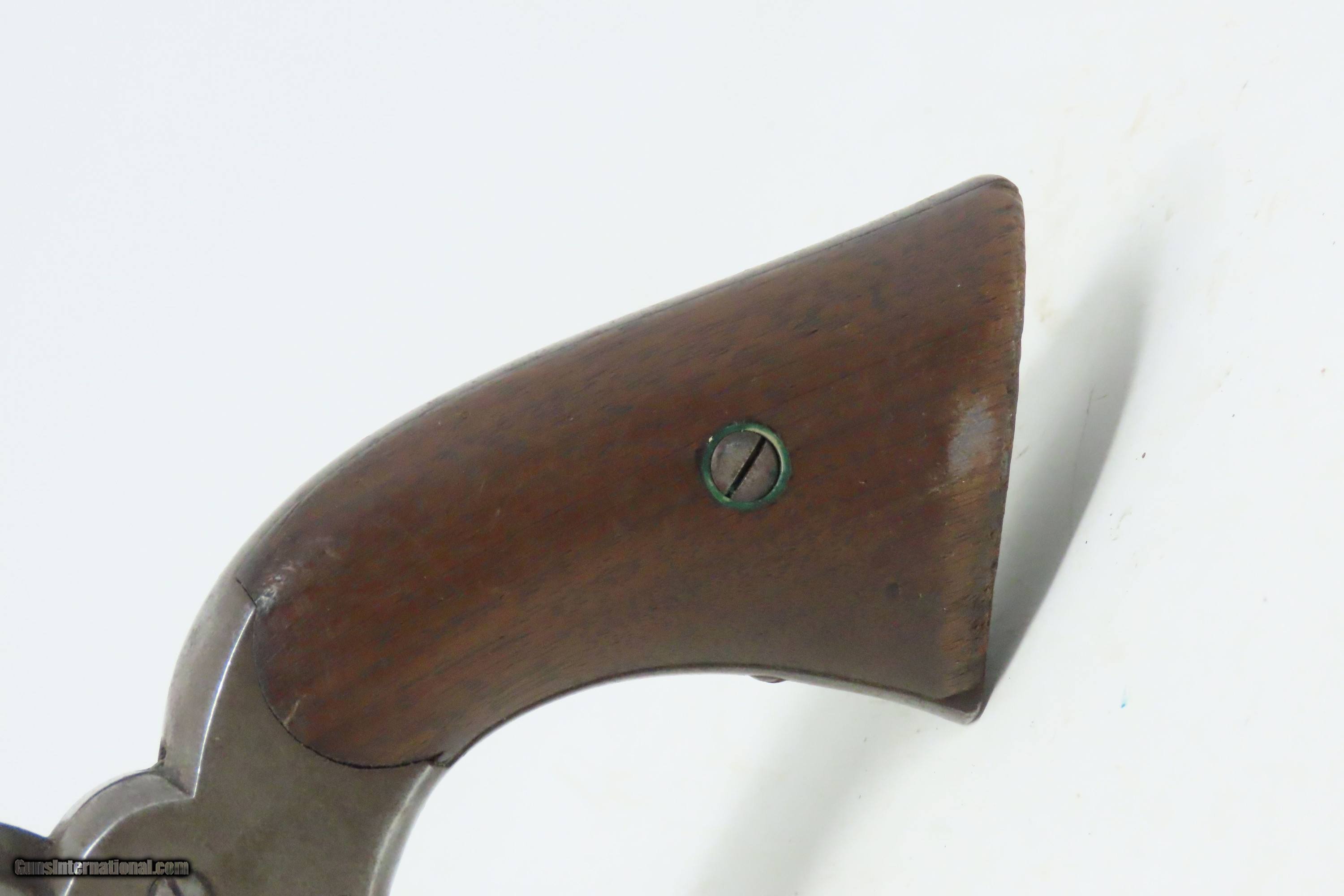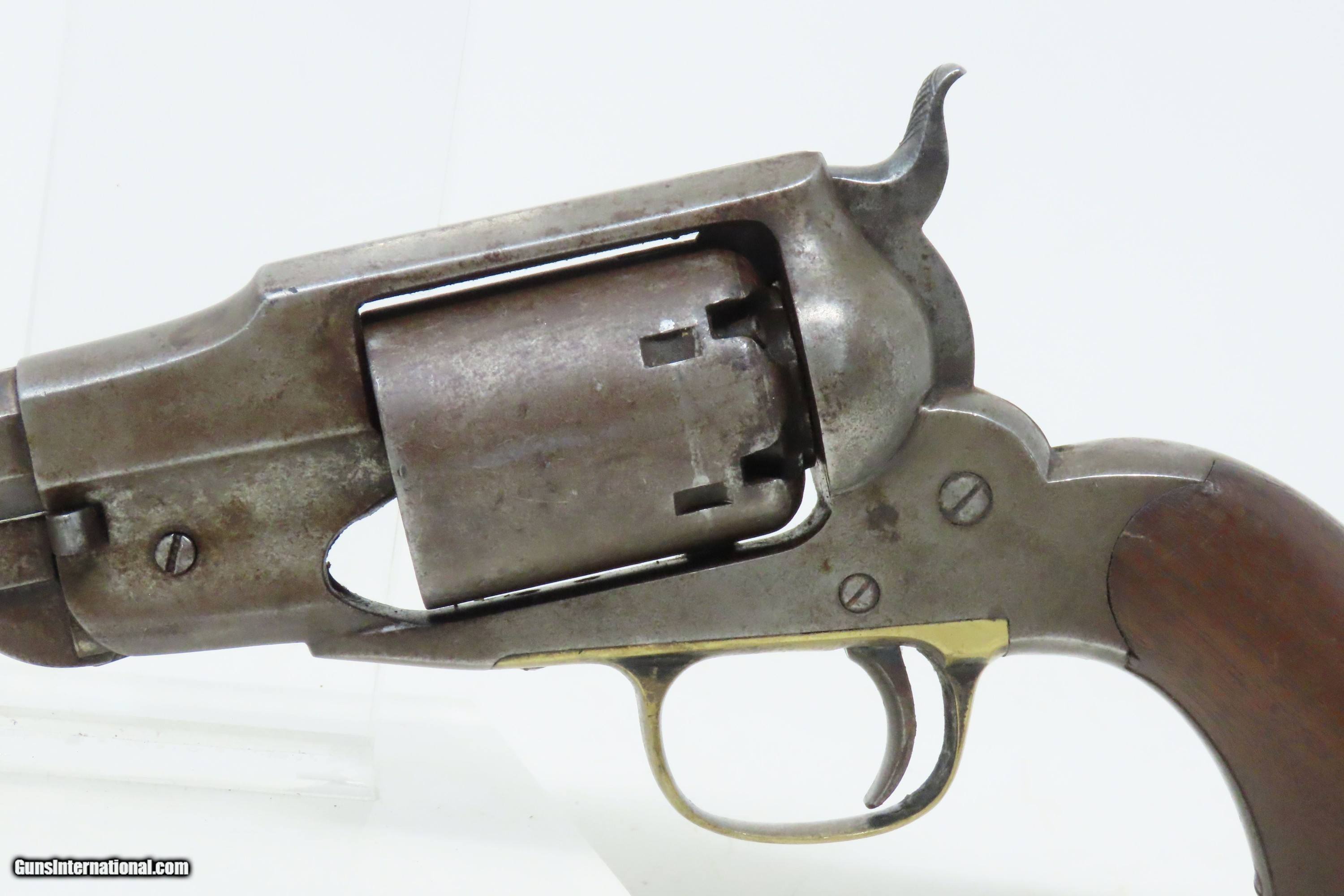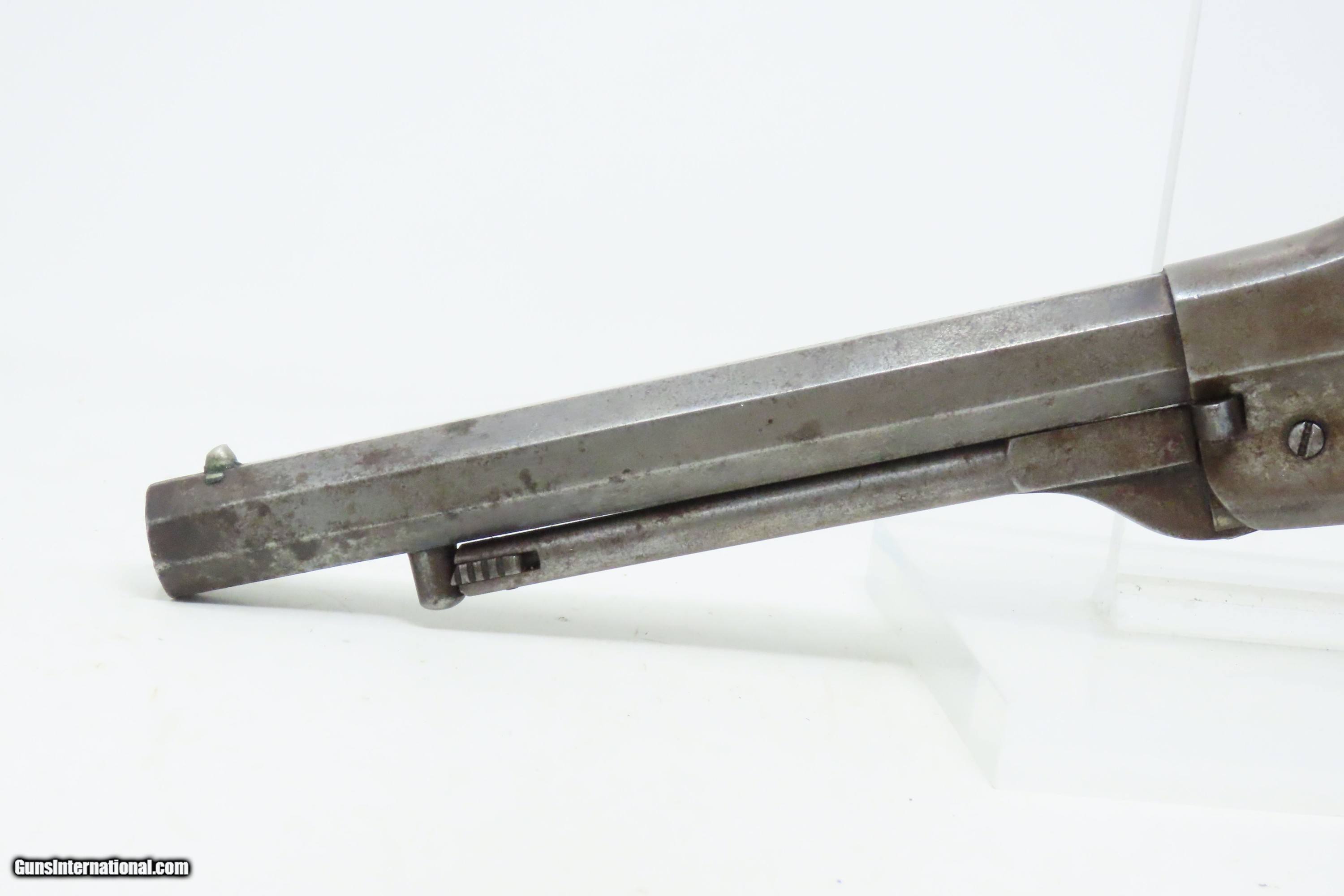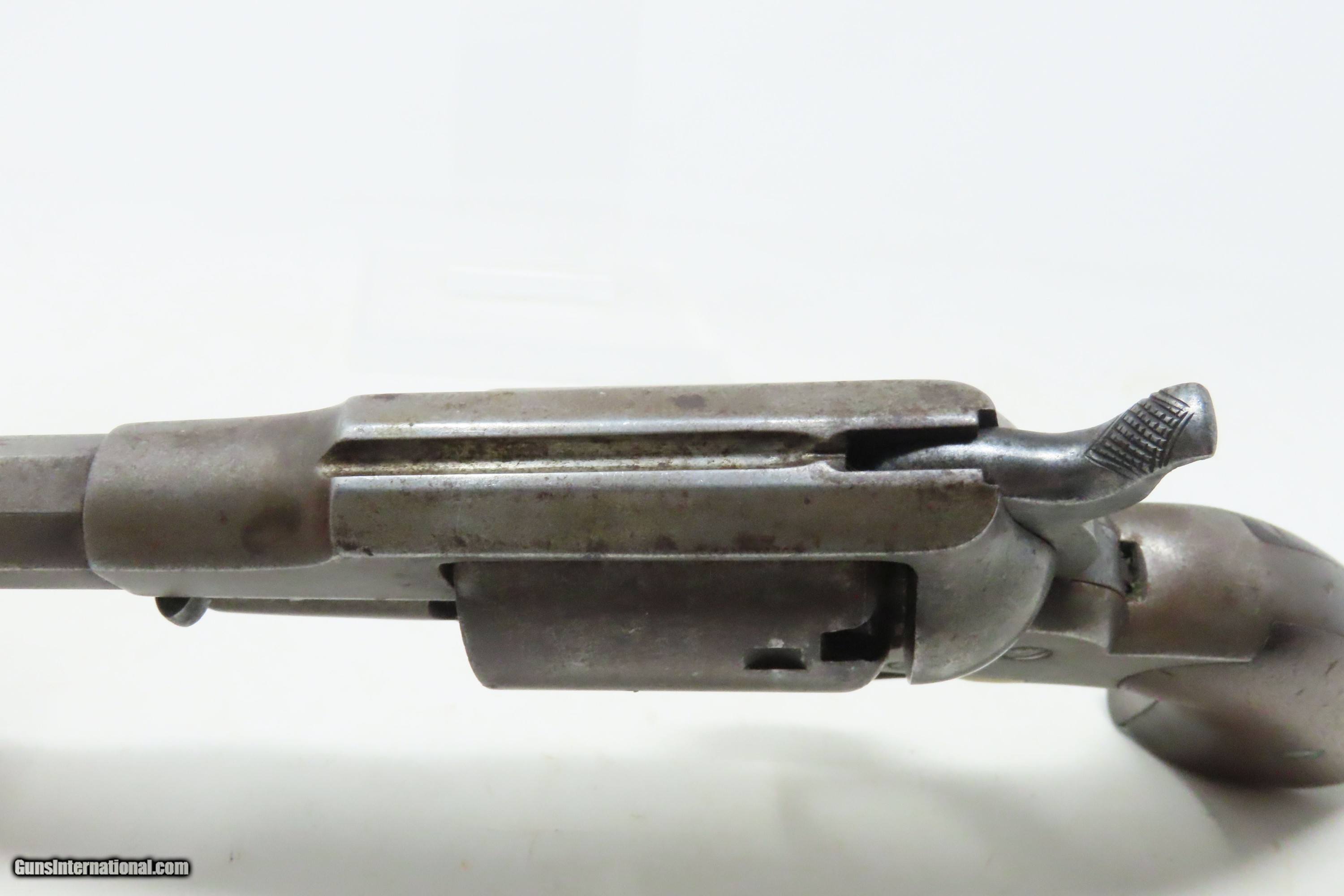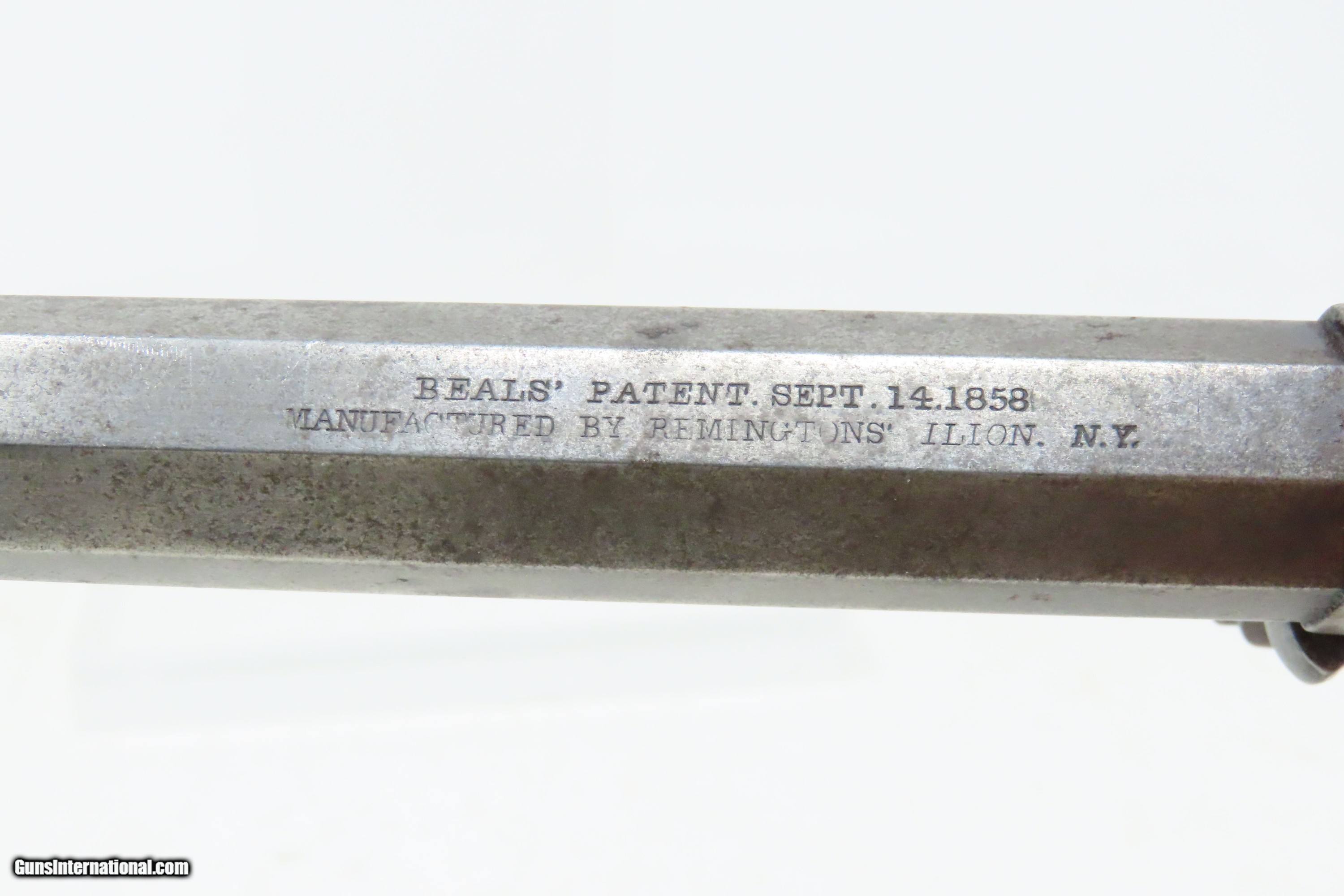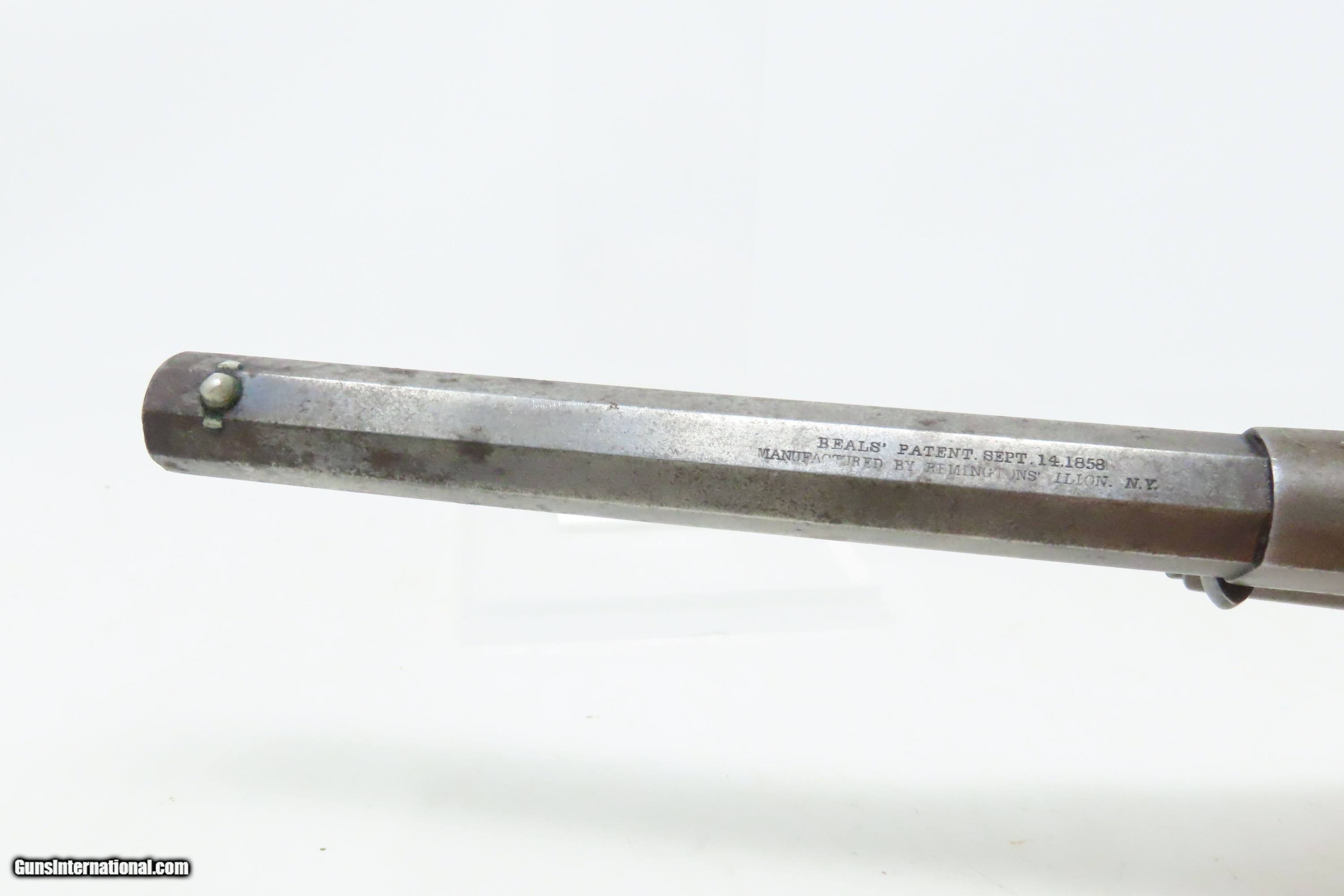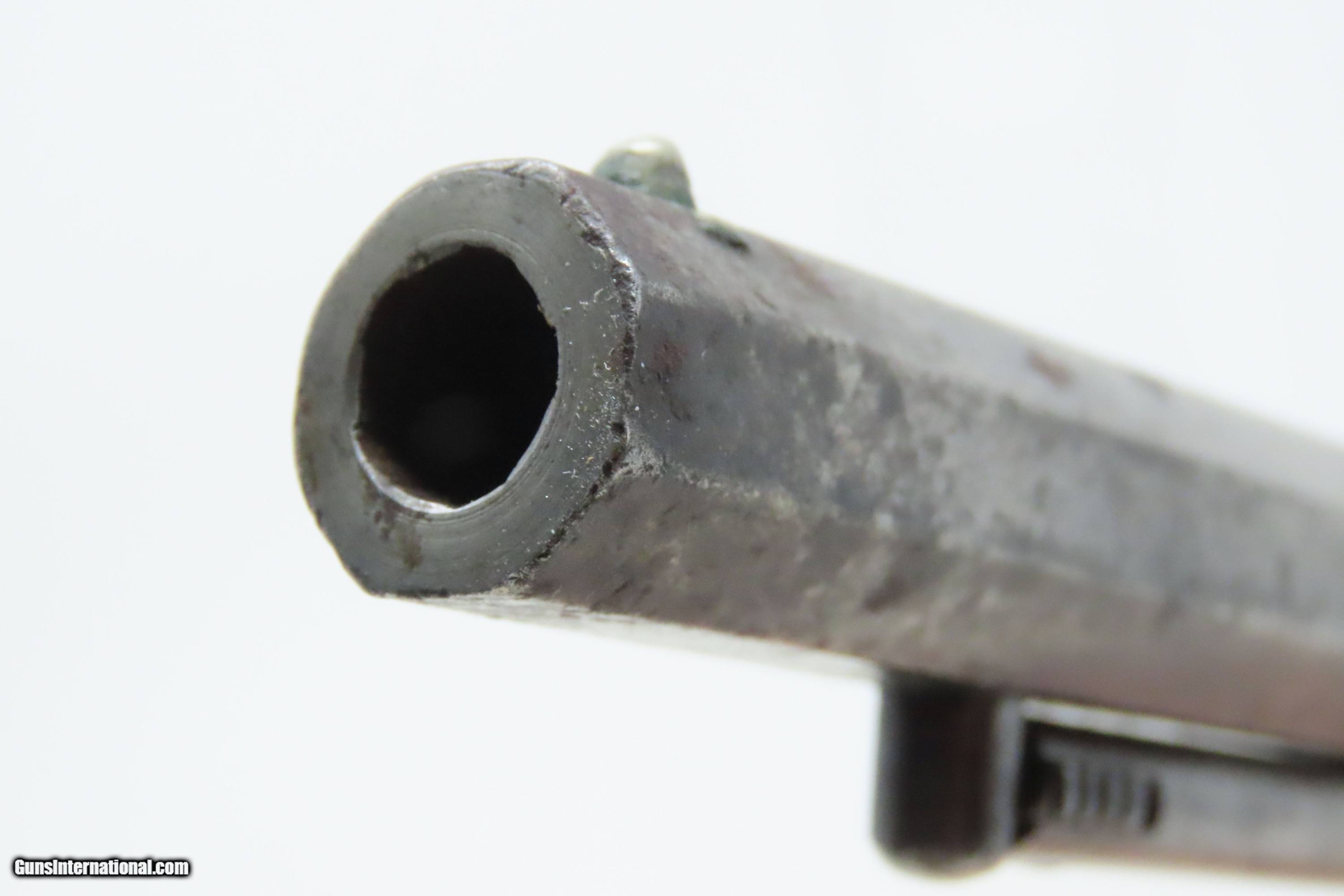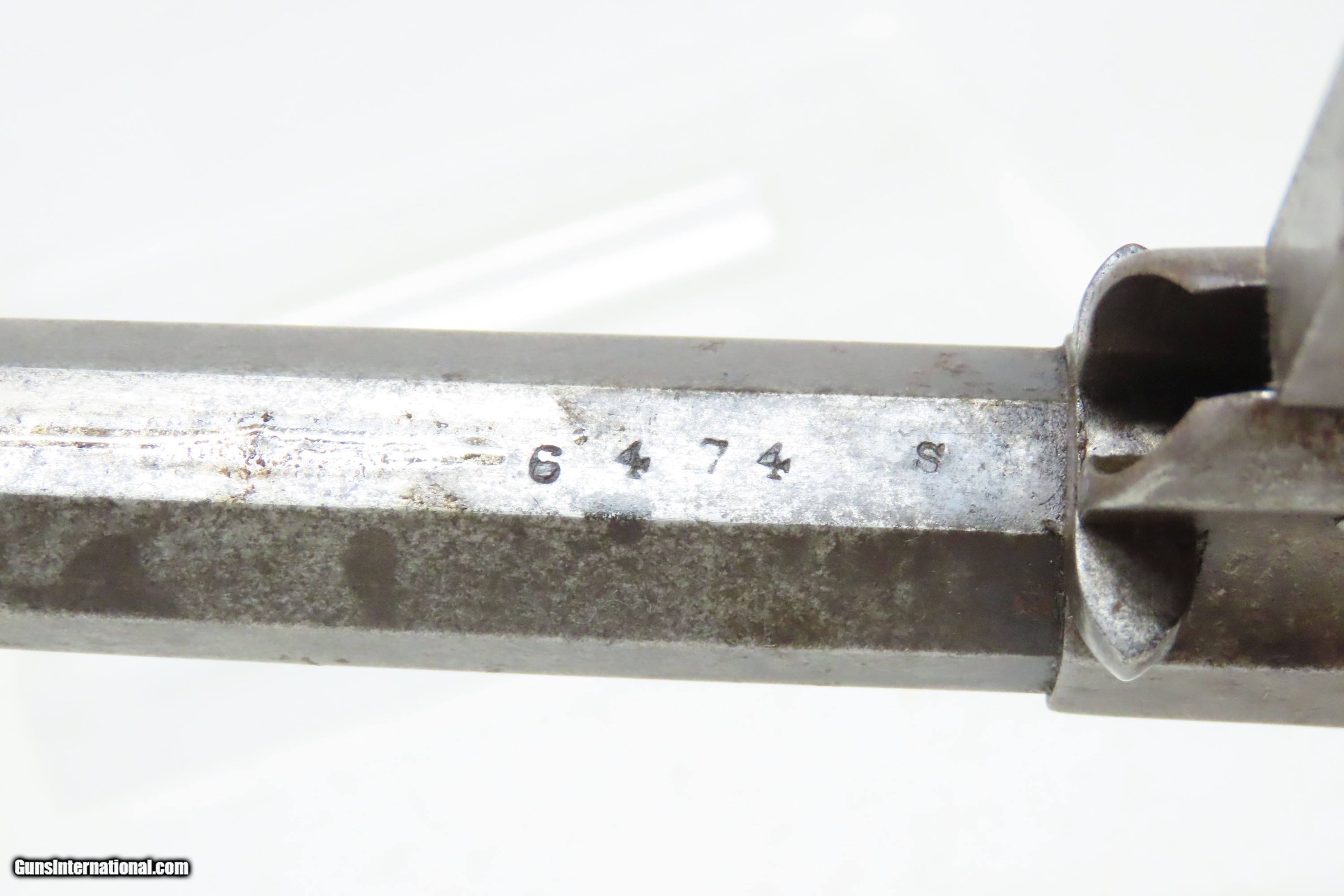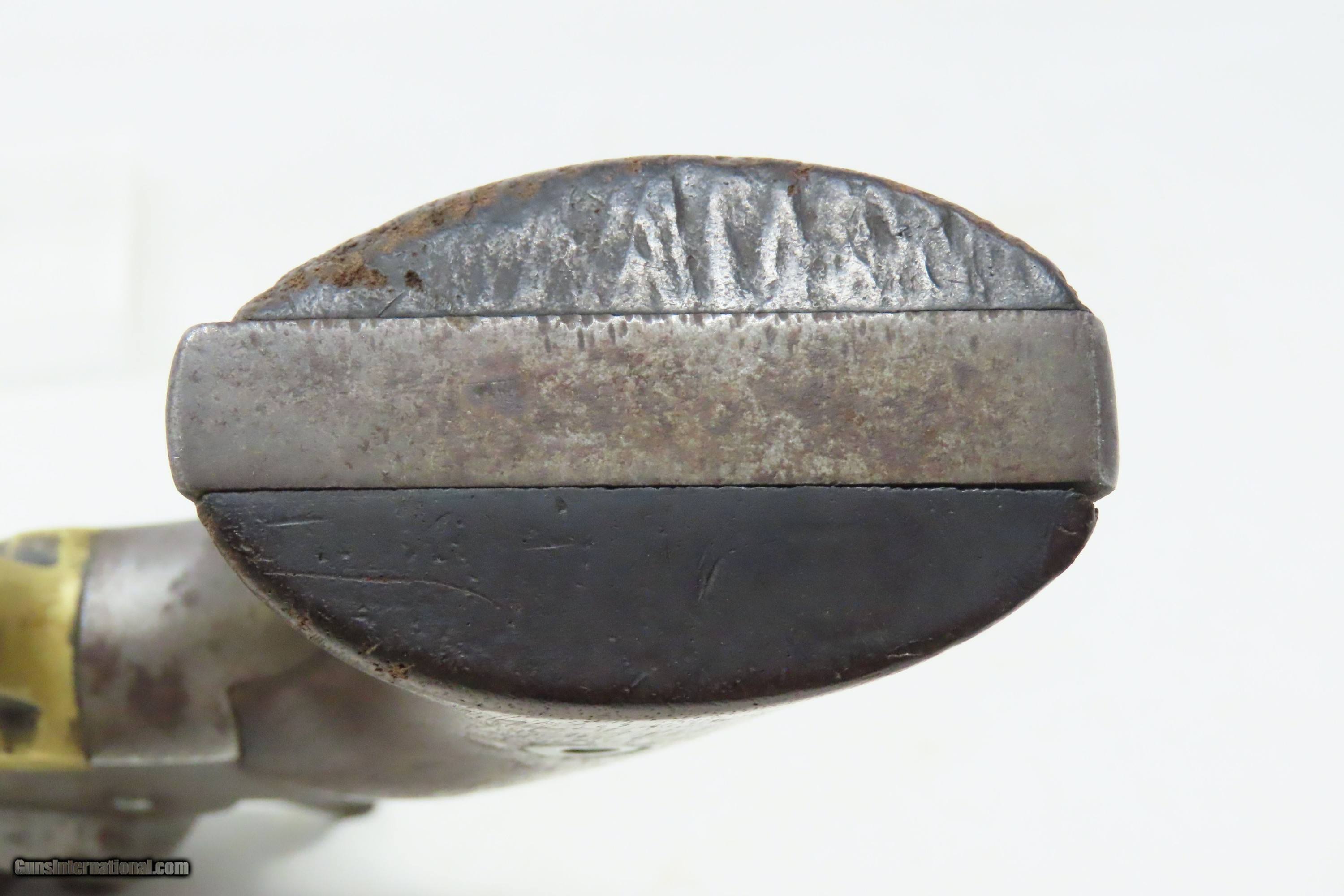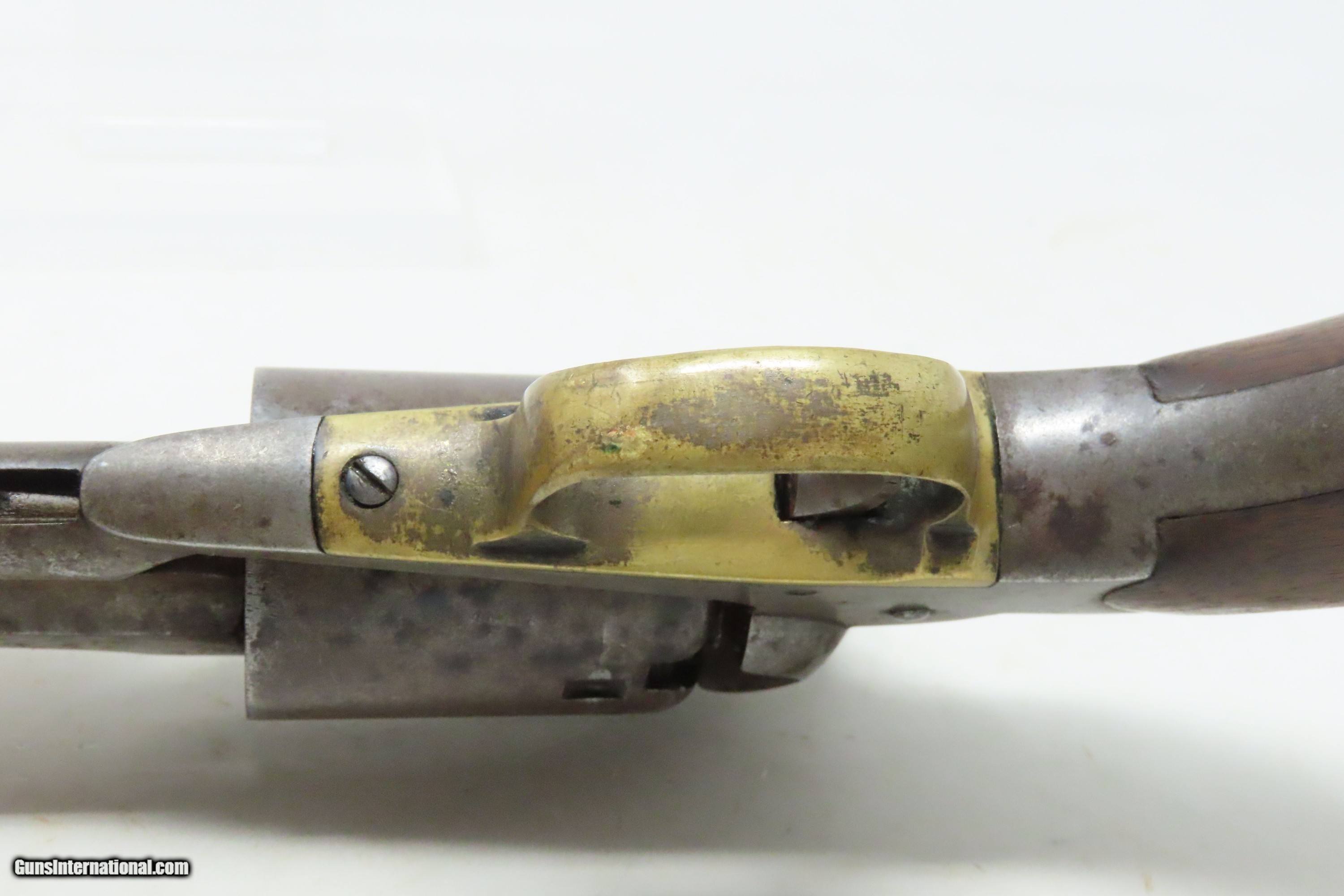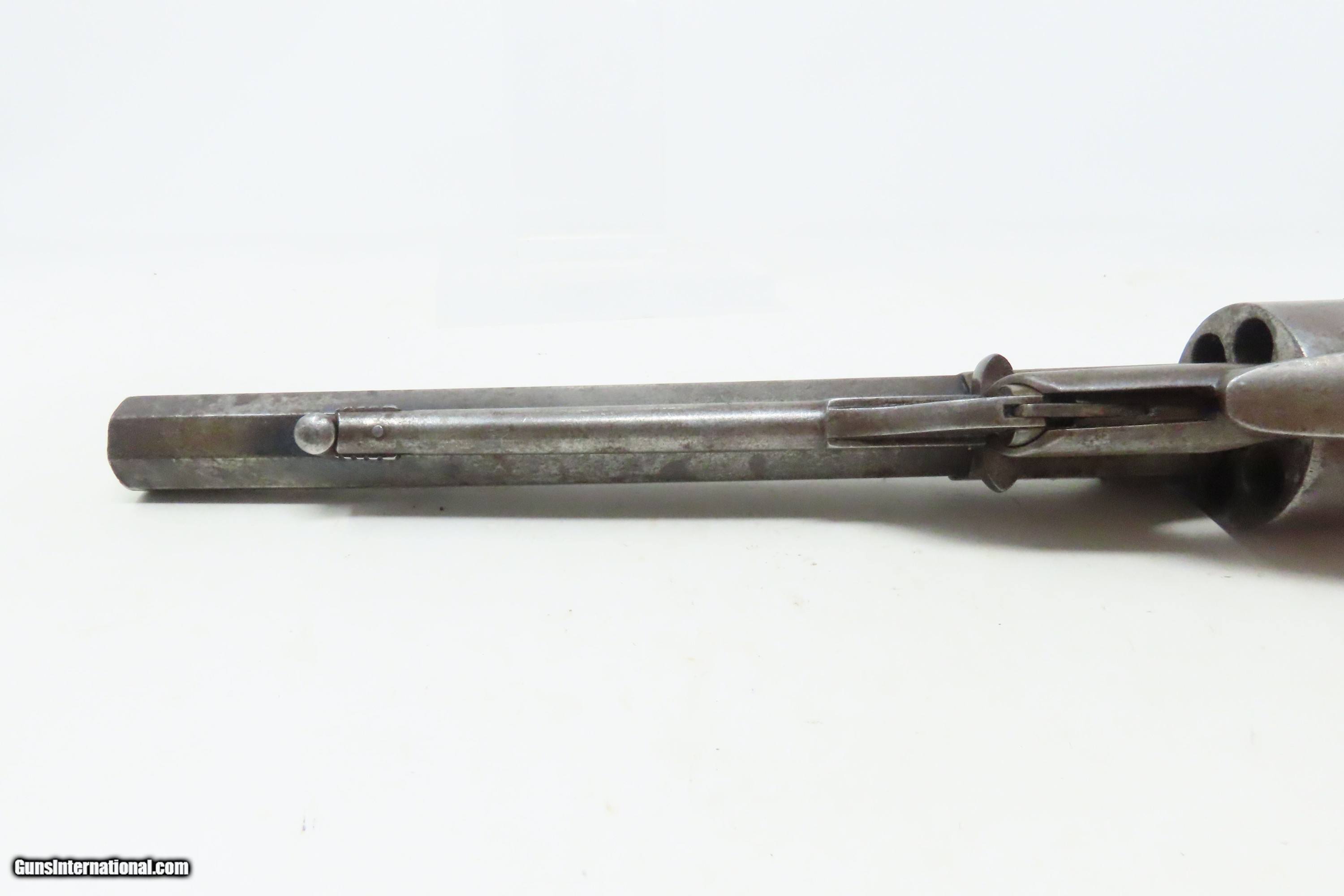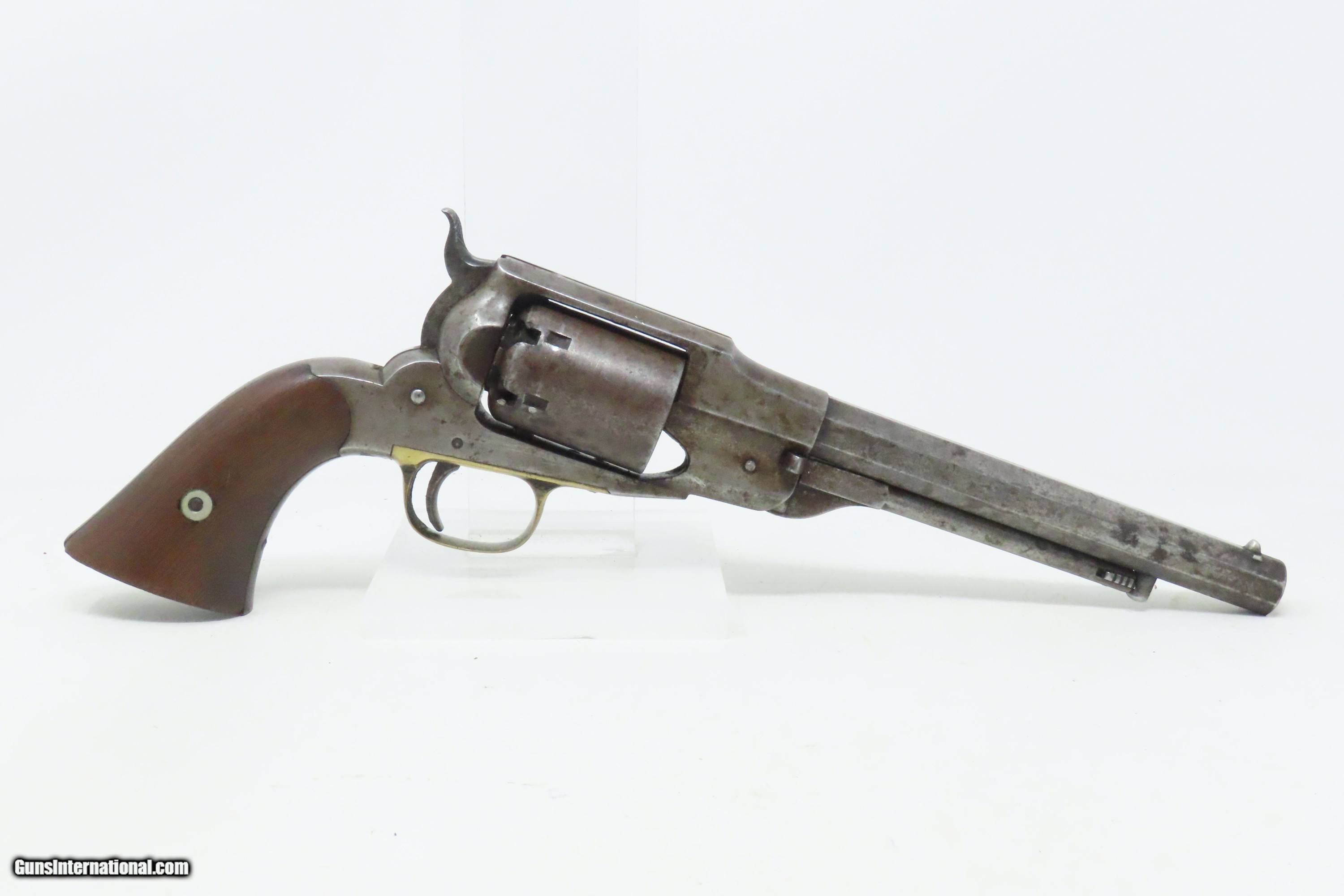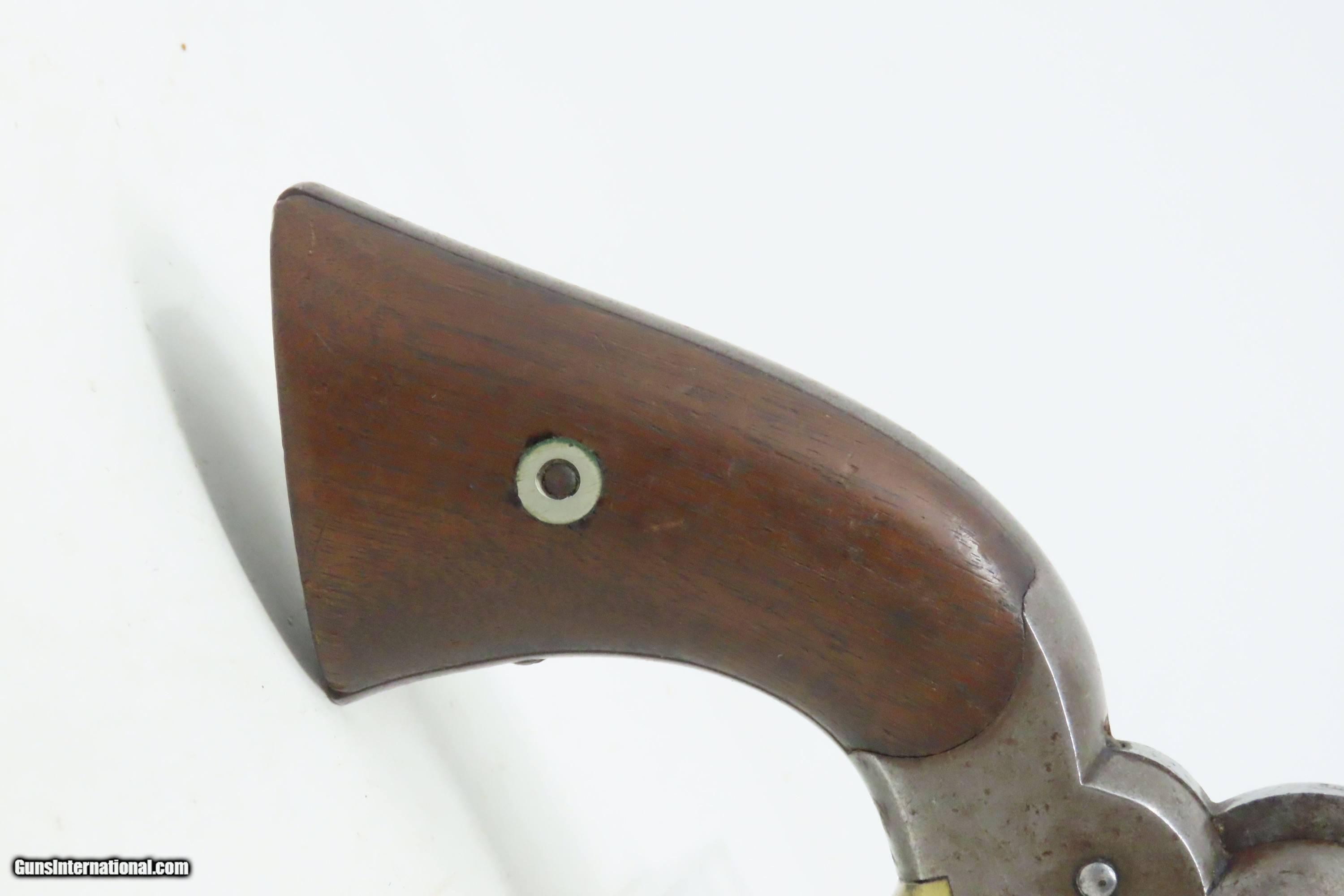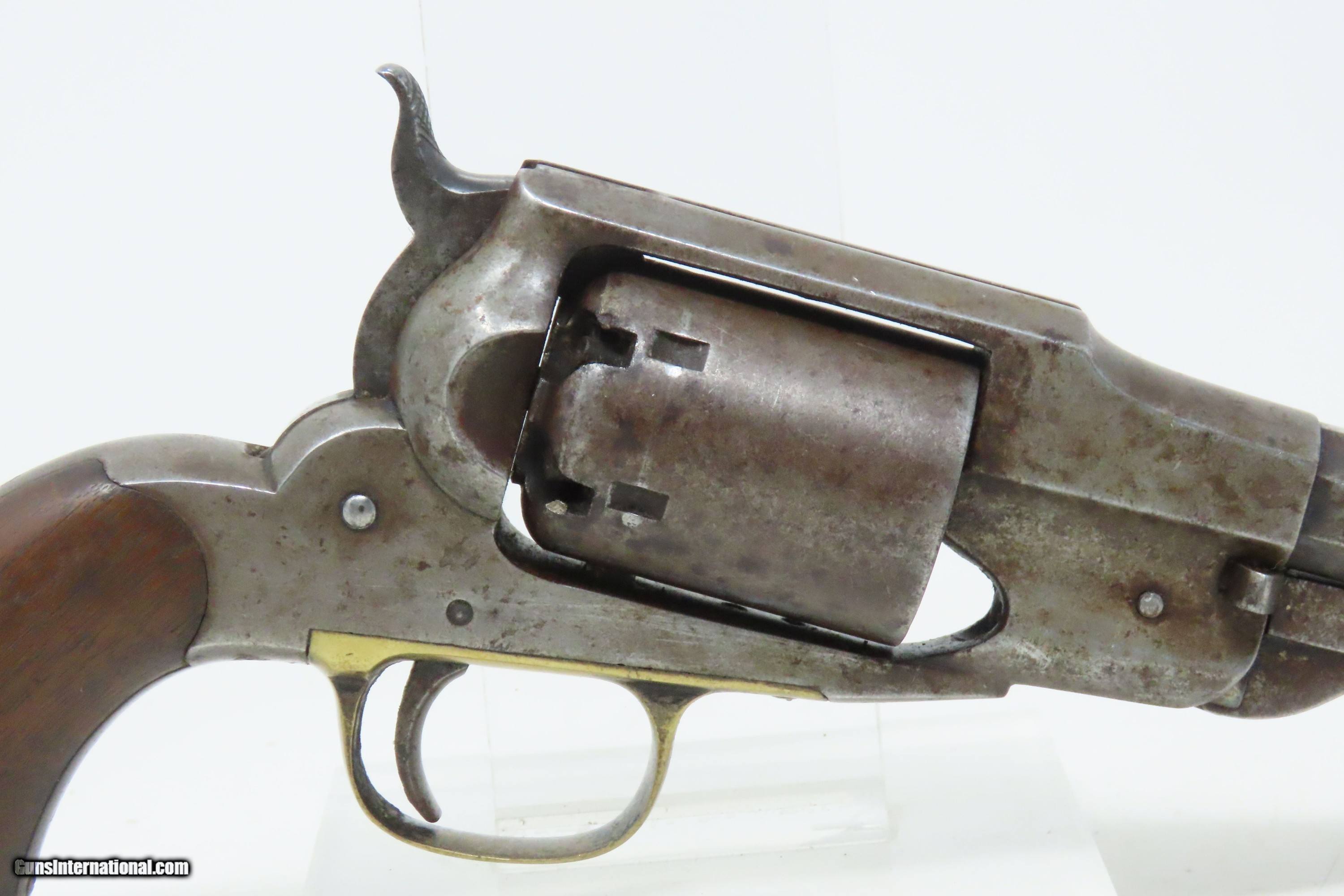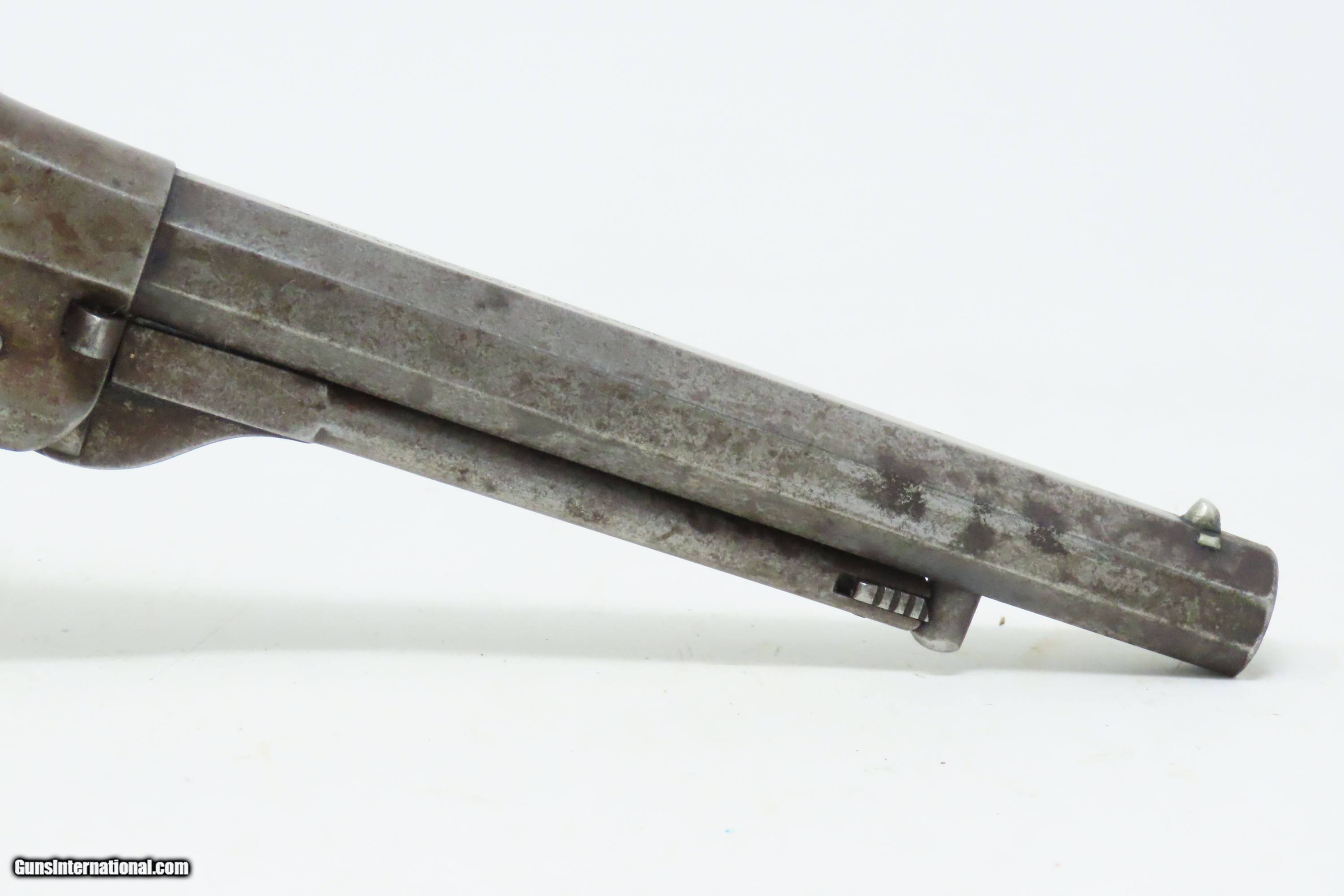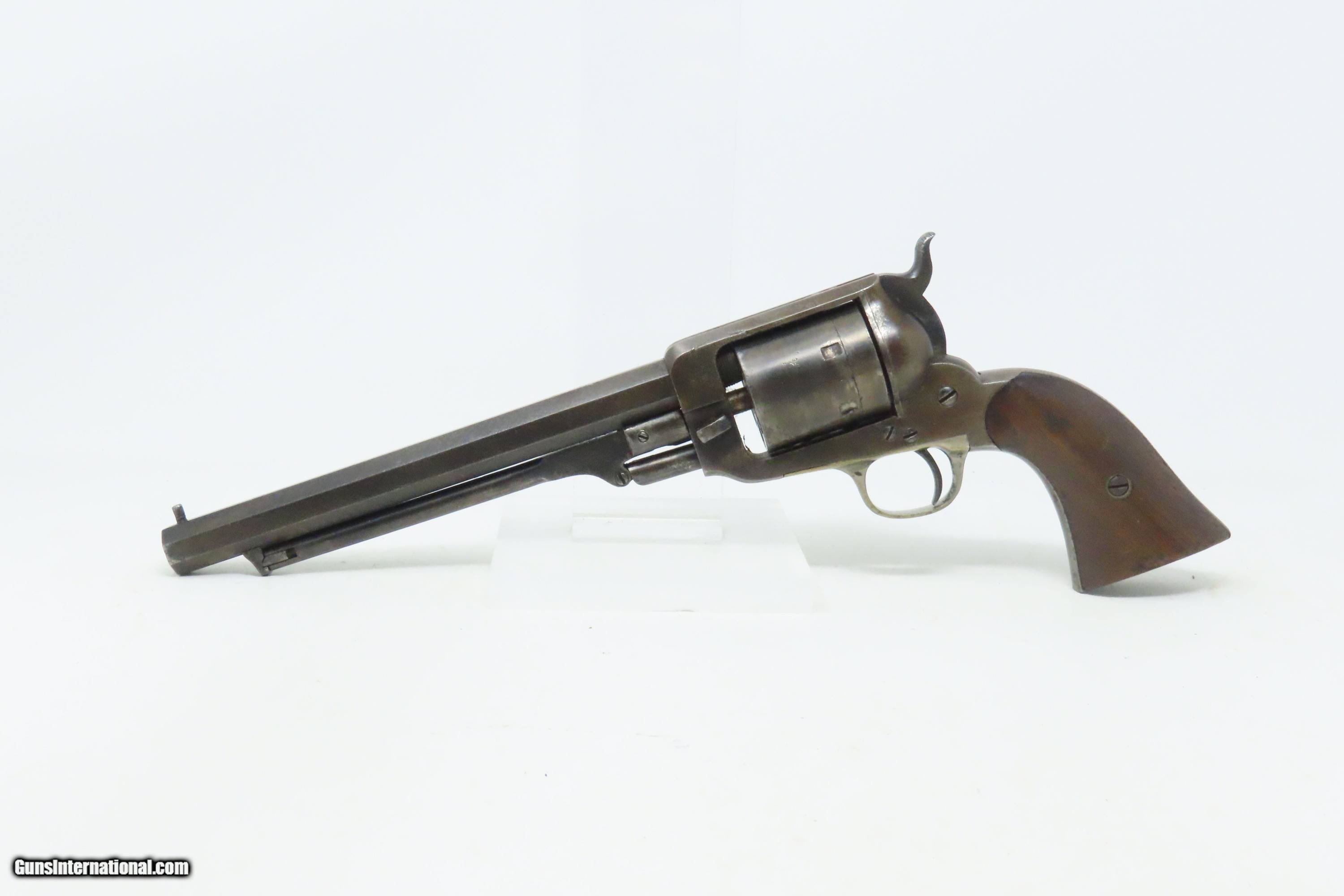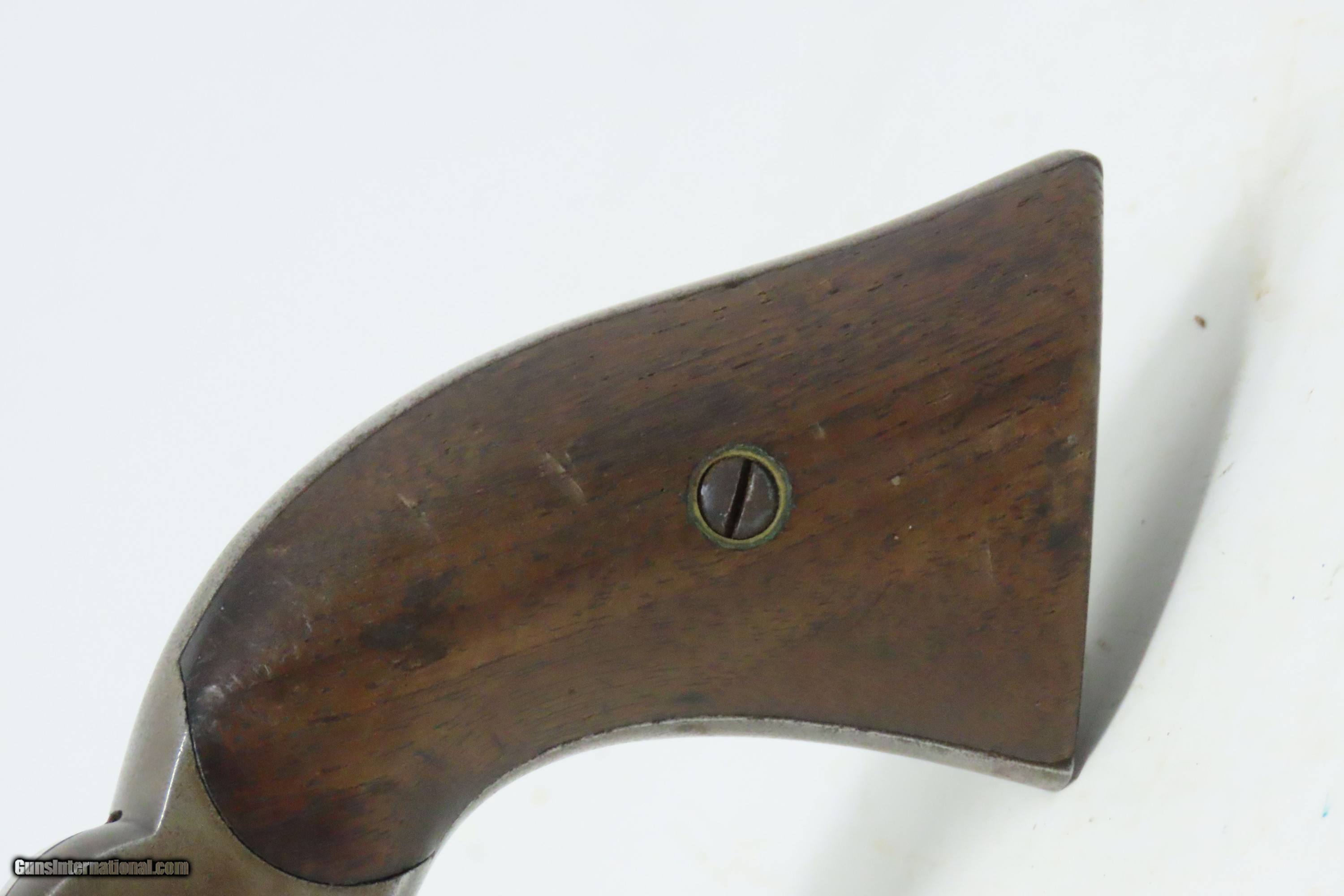Your Session is Ending
 The server has not detected any activity for the last 3 hours.
For your security, your session will expire in 2 minutes and you will be redirected to the Sign In page.
Would you like to stay signed in?
The server has not detected any activity for the last 3 hours.
For your security, your session will expire in 2 minutes and you will be redirected to the Sign In page.
Would you like to stay signed in?
CASED SET Antique BEALS REMINGTON/WHITNEY Revolvers GEOFFREY BOOTHROYD Previously Owned by BRITISH FIREARMS EXPERT & AUTHOR
CASED SET Antique BEALS REMINGTON/WHITNEY Revolvers GEOFFREY BOOTHROYD Previously Owned by BRITISH FIREARMS EXPERT & AUTHOR
Guns International #: 102833040
Seller's Inventory #: 240415
Seller's Information
When emailing or calling sellers direct,
please mention that you saw their listing on GunsInternational.com
Seller: AncestryGunsLLC
Company: Ancestry Guns LLC
Company: Ancestry Guns LLC
Member Since: 11/3/16
State:
Missouri
Zip: 65203
Country: United States
Phone:
(314) 707-7373
Int'l Phone:
314-707-7373
Platinum Seller
Active Listings: 1069
Total Listings: 42663
Seller Type: FFL Dealer
Return Policy: 3 day inspection and return policy on used guns and accessories.
Payment Methods: Credit Card, Certified Check, Money Order
CASED SET Antique BEALS REMINGTON/WHITNEY Revolvers GEOFFREY BOOTHROYD
Previously Owned by BRITISH FIREARMS EXPERT & AUTHOR
Description:
CASED SET Antique BEALS REMINGTON/WHITNEY Revolvers GEOFFREY BOOTHROYD
Previously Owned by BRITISH FIREARMS EXPERT & AUTHOR
Here we present an Antique Cased Set of Beals Patent Revolvers, with the Remington-Beals Navy Percussion Revolver manufactured circa 1861-1862 at the Remington Armory in Ilion, New York, and the Whitney Navy Cartridge Conversion Revolver, made circa the early-1860s in New Haven, Connecticut and converted to cartridge circa the early-1870s.
Fordyce Beals (1807-1870) was a firearm’s engineer who worked both for the Whitneyville Armory and then the Remington Armory in the mid-1850s. During his time at Remington, he developed the Remington-Beals six shot, single action, Army revolver which appeared in 1861. It was prominent as a revolver that saw service with both sides of the American Civil War. This gun’s design is typical of the period. The grip is integral and covered in wood for comfort, and the solid frame added robustness to the design. This gun is commonly, though inaccurately, referred to as the Model 1858 due to the patent markings that appeared on the firearm, although wide scale production did not start until 1861. The Remington revolver was a secondary, supplemental issue firearm for the Union Army until the Colt factory fire of 1864, when it became the primary. Due to the fire, the Colt 1860 Army was not available for some time. Subsequently, large numbers of the Remington revolver were ordered by the U.S. government. It was more expensive than the Colt, but those who could afford it remarked on its durability.
The Whitney Navy Cartridge Conversion Revolver, made circa the early 1860s in New Haven, Connecticut and converted to cartridge circa 1870. Eli Whitney Sr. established his Whitneyville Armory in 1798 and produced firearms (among other things) by contract for the young U.S. government. Just prior to this, in 1793, Whitney invented the mechanical cotton gin, which dramatically changed the economic landscape in the U.S., namely in the South. While his invention was a labor-saving device, making the processing of harvested cotton extremely efficient and requiring fewer laborers, his machine caused the market for cotton to explode and more laborers were needed to plant, grow and harvest the crop. This resulted in a corresponding boom in the Southern slave trade. Great fortunes were created, and the population of the South became such that one in three Southerners were slaves. All this provided the fuel that would become the raze that was the American Civil War. Eli Whitney died in 1825, and his son, Eli Whitney Jr., began running the family business in 1841. Whitney Jr. seized the opportunity in 1847 to manufacture 1,000 of Samuel Colt’s latest revolver the Colt Walker revolver. Production of this revolver helped both parties immensely as it kept Colt in business, and it allowed Whitney Jr. to tool up and gain experience making revolvers. With the expiration of Colt’s patents in 1857, Whitney began production of percussion revolvers based on Colt’s patents, some of them very closely copied. The Whitney Navy Revolver came about when Fordyce Beals—later of Remington-Beal fame—came to work for the company. He was the primary designer, which was indeed why the Remington-Beals Navy and Army Revolvers came to look so much like the Whitney. The Whitney has the distinction of being one of the first successful solid framed revolvers. As their production began before the war in about 1857, both the Union and the Confederacy utilized them in the American Civil War. One very notable character known to have used the Whitney Navy was Confederate Cavalry General J.E.B. Stuart. Many of these were purchased by the US government and by individual soldiers for use in the Civil War.
These two revolvers come with a shared custom oak case. The case has “GB” inscribed on the lid escutcheon and a “G. BOOTHROYD” metal label inside. Geoffrey Boothroyd (1925-2001) was a British firearms expert and author (A Guide to Gun Collecting and Gun Through the Ages in addition to articles in such publications as The Gun Report) who advised Ian Flemming for the James Bond series and was the inspiration for the armorer character “Q” aka “Major Boothroyd” who was a character included in Fleming’s books through 1977. Boothroyd was responsible for guiding Ian Fleming away from the Beretta in .25 ACP that had been Bond’s go-to, instead choosing the PPK for Bond’s sidearm from Dr. No and onward. In essence, Boothroyd had a hand in the Walther PPK becoming immortalized in cinema.
The overall condition for the top gun is good. Dark patina. The front sight is an old replacement. The action is strong. The bore is in good condition with nice rifling. The rear heel of the right grip has an old chip and the grips are otherwise solid. Numbers match.
The overall condition for the bottom gun is very good. Even, gray patina. The action is excellent. The bore is in good condition with strong rifling. The grips show use and remain solid. Numbers match.
The case has been relined and remains in good condition. The exterior placard is marked with the initials “G.B.”. The interior placard is marked with the name “G. BOOTHROYD”.
Own the original! This is a legitimate antique and not a reproduction.
Remington-Beals barrel is 7-1/2 inches.
Remington-Beals caliber is .36 Percussion.
Whitney Navy barrel is 7-3/4 inches.
Whitney Navy caliber is .38 Rimfire.
Overall condition as seen in photos.
Very Fast. Very Safe. FREE SHIPPING WORLDWIDE. Delivered directly to your door by express mail!
Guaranteed AUTHENTIC & Includes CERTIFICATE OF AUTHENTICITY.
ancestryguns
$4500
#240415
SOLD
Antique: Yes
Description:
CASED SET Antique BEALS REMINGTON/WHITNEY Revolvers GEOFFREY BOOTHROYD
Previously Owned by BRITISH FIREARMS EXPERT & AUTHOR
Here we present an Antique Cased Set of Beals Patent Revolvers, with the Remington-Beals Navy Percussion Revolver manufactured circa 1861-1862 at the Remington Armory in Ilion, New York, and the Whitney Navy Cartridge Conversion Revolver, made circa the early-1860s in New Haven, Connecticut and converted to cartridge circa the early-1870s.
Fordyce Beals (1807-1870) was a firearm’s engineer who worked both for the Whitneyville Armory and then the Remington Armory in the mid-1850s. During his time at Remington, he developed the Remington-Beals six shot, single action, Army revolver which appeared in 1861. It was prominent as a revolver that saw service with both sides of the American Civil War. This gun’s design is typical of the period. The grip is integral and covered in wood for comfort, and the solid frame added robustness to the design. This gun is commonly, though inaccurately, referred to as the Model 1858 due to the patent markings that appeared on the firearm, although wide scale production did not start until 1861. The Remington revolver was a secondary, supplemental issue firearm for the Union Army until the Colt factory fire of 1864, when it became the primary. Due to the fire, the Colt 1860 Army was not available for some time. Subsequently, large numbers of the Remington revolver were ordered by the U.S. government. It was more expensive than the Colt, but those who could afford it remarked on its durability.
The Whitney Navy Cartridge Conversion Revolver, made circa the early 1860s in New Haven, Connecticut and converted to cartridge circa 1870. Eli Whitney Sr. established his Whitneyville Armory in 1798 and produced firearms (among other things) by contract for the young U.S. government. Just prior to this, in 1793, Whitney invented the mechanical cotton gin, which dramatically changed the economic landscape in the U.S., namely in the South. While his invention was a labor-saving device, making the processing of harvested cotton extremely efficient and requiring fewer laborers, his machine caused the market for cotton to explode and more laborers were needed to plant, grow and harvest the crop. This resulted in a corresponding boom in the Southern slave trade. Great fortunes were created, and the population of the South became such that one in three Southerners were slaves. All this provided the fuel that would become the raze that was the American Civil War. Eli Whitney died in 1825, and his son, Eli Whitney Jr., began running the family business in 1841. Whitney Jr. seized the opportunity in 1847 to manufacture 1,000 of Samuel Colt’s latest revolver the Colt Walker revolver. Production of this revolver helped both parties immensely as it kept Colt in business, and it allowed Whitney Jr. to tool up and gain experience making revolvers. With the expiration of Colt’s patents in 1857, Whitney began production of percussion revolvers based on Colt’s patents, some of them very closely copied. The Whitney Navy Revolver came about when Fordyce Beals—later of Remington-Beal fame—came to work for the company. He was the primary designer, which was indeed why the Remington-Beals Navy and Army Revolvers came to look so much like the Whitney. The Whitney has the distinction of being one of the first successful solid framed revolvers. As their production began before the war in about 1857, both the Union and the Confederacy utilized them in the American Civil War. One very notable character known to have used the Whitney Navy was Confederate Cavalry General J.E.B. Stuart. Many of these were purchased by the US government and by individual soldiers for use in the Civil War.
These two revolvers come with a shared custom oak case. The case has “GB” inscribed on the lid escutcheon and a “G. BOOTHROYD” metal label inside. Geoffrey Boothroyd (1925-2001) was a British firearms expert and author (A Guide to Gun Collecting and Gun Through the Ages in addition to articles in such publications as The Gun Report) who advised Ian Flemming for the James Bond series and was the inspiration for the armorer character “Q” aka “Major Boothroyd” who was a character included in Fleming’s books through 1977. Boothroyd was responsible for guiding Ian Fleming away from the Beretta in .25 ACP that had been Bond’s go-to, instead choosing the PPK for Bond’s sidearm from Dr. No and onward. In essence, Boothroyd had a hand in the Walther PPK becoming immortalized in cinema.
The overall condition for the top gun is good. Dark patina. The front sight is an old replacement. The action is strong. The bore is in good condition with nice rifling. The rear heel of the right grip has an old chip and the grips are otherwise solid. Numbers match.
The overall condition for the bottom gun is very good. Even, gray patina. The action is excellent. The bore is in good condition with strong rifling. The grips show use and remain solid. Numbers match.
The case has been relined and remains in good condition. The exterior placard is marked with the initials “G.B.”. The interior placard is marked with the name “G. BOOTHROYD”.
Own the original! This is a legitimate antique and not a reproduction.
Remington-Beals barrel is 7-1/2 inches.
Remington-Beals caliber is .36 Percussion.
Whitney Navy barrel is 7-3/4 inches.
Whitney Navy caliber is .38 Rimfire.
Overall condition as seen in photos.
Very Fast. Very Safe. FREE SHIPPING WORLDWIDE. Delivered directly to your door by express mail!
Guaranteed AUTHENTIC & Includes CERTIFICATE OF AUTHENTICITY.
ancestryguns
$4500
#240415
SOLD
Antique: Yes
Click Photo to Enlarge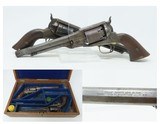
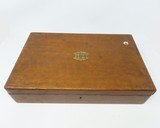

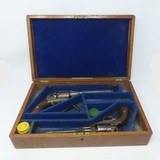
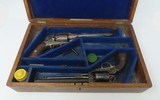
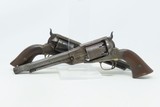
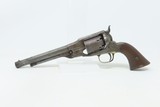

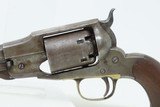

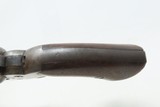

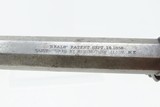
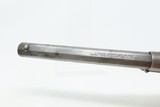
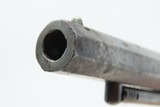
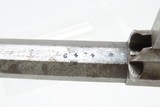
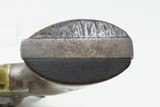

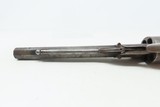
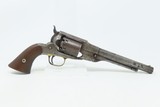


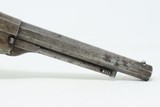
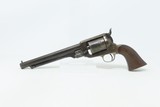
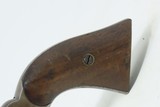
|
Guns International #: 102833040
Seller's Information
When emailing or calling sellers direct,
please mention that you saw their listing on GunsInternational.com
Seller: AncestryGunsLLC
Company: Ancestry Guns LLC Member Since: 11/3/16
State:
Missouri
Zip: 65203
Country: United States
Phone:
(314) 707-7373
Int'l Phone:
314-707-7373
Platinum Seller
Active Listings: 1069
Total Listings: 42663
Seller Type: FFL Dealer
Return Policy: 3 day inspection and return policy on used guns and accessories.
Payment Methods: Credit Card, Certified Check, Money Order
CASED SET Antique BEALS REMINGTON/WHITNEY Revolvers GEOFFREY BOOTHROYD
Previously Owned by BRITISH FIREARMS EXPERT & AUTHOR
Description: CASED SET Antique BEALS REMINGTON/WHITNEY Revolvers GEOFFREY BOOTHROYD Previously Owned by BRITISH FIREARMS EXPERT & AUTHOR Here we present an Antique Cased Set of Beals Patent Revolvers, with the Remington-Beals Navy Percussion Revolver manufactured circa 1861-1862 at the Remington Armory in Ilion, New York, and the Whitney Navy Cartridge Conversion Revolver, made circa the early-1860s in New Haven, Connecticut and converted to cartridge circa the early-1870s. Fordyce Beals (1807-1870) was a firearm’s engineer who worked both for the Whitneyville Armory and then the Remington Armory in the mid-1850s. During his time at Remington, he developed the Remington-Beals six shot, single action, Army revolver which appeared in 1861. It was prominent as a revolver that saw service with both sides of the American Civil War. This gun’s design is typical of the period. The grip is integral and covered in wood for comfort, and the solid frame added robustness to the design. This gun is commonly, though inaccurately, referred to as the Model 1858 due to the patent markings that appeared on the firearm, although wide scale production did not start until 1861. The Remington revolver was a secondary, supplemental issue firearm for the Union Army until the Colt factory fire of 1864, when it became the primary. Due to the fire, the Colt 1860 Army was not available for some time. Subsequently, large numbers of the Remington revolver were ordered by the U.S. government. It was more expensive than the Colt, but those who could afford it remarked on its durability. The Whitney Navy Cartridge Conversion Revolver, made circa the early 1860s in New Haven, Connecticut and converted to cartridge circa 1870. Eli Whitney Sr. established his Whitneyville Armory in 1798 and produced firearms (among other things) by contract for the young U.S. government. Just prior to this, in 1793, Whitney invented the mechanical cotton gin, which dramatically changed the economic landscape in the U.S., namely in the South. While his invention was a labor-saving device, making the processing of harvested cotton extremely efficient and requiring fewer laborers, his machine caused the market for cotton to explode and more laborers were needed to plant, grow and harvest the crop. This resulted in a corresponding boom in the Southern slave trade. Great fortunes were created, and the population of the South became such that one in three Southerners were slaves. All this provided the fuel that would become the raze that was the American Civil War. Eli Whitney died in 1825, and his son, Eli Whitney Jr., began running the family business in 1841. Whitney Jr. seized the opportunity in 1847 to manufacture 1,000 of Samuel Colt’s latest revolver the Colt Walker revolver. Production of this revolver helped both parties immensely as it kept Colt in business, and it allowed Whitney Jr. to tool up and gain experience making revolvers. With the expiration of Colt’s patents in 1857, Whitney began production of percussion revolvers based on Colt’s patents, some of them very closely copied. The Whitney Navy Revolver came about when Fordyce Beals—later of Remington-Beal fame—came to work for the company. He was the primary designer, which was indeed why the Remington-Beals Navy and Army Revolvers came to look so much like the Whitney. The Whitney has the distinction of being one of the first successful solid framed revolvers. As their production began before the war in about 1857, both the Union and the Confederacy utilized them in the American Civil War. One very notable character known to have used the Whitney Navy was Confederate Cavalry General J.E.B. Stuart. Many of these were purchased by the US government and by individual soldiers for use in the Civil War. These two revolvers come with a shared custom oak case. The case has “GB” inscribed on the lid escutcheon and a “G. BOOTHROYD” metal label inside. Geoffrey Boothroyd (1925-2001) was a British firearms expert and author (A Guide to Gun Collecting and Gun Through the Ages in addition to articles in such publications as The Gun Report) who advised Ian Flemming for the James Bond series and was the inspiration for the armorer character “Q” aka “Major Boothroyd” who was a character included in Fleming’s books through 1977. Boothroyd was responsible for guiding Ian Fleming away from the Beretta in .25 ACP that had been Bond’s go-to, instead choosing the PPK for Bond’s sidearm from Dr. No and onward. In essence, Boothroyd had a hand in the Walther PPK becoming immortalized in cinema. The overall condition for the top gun is good. Dark patina. The front sight is an old replacement. The action is strong. The bore is in good condition with nice rifling. The rear heel of the right grip has an old chip and the grips are otherwise solid. Numbers match. The overall condition for the bottom gun is very good. Even, gray patina. The action is excellent. The bore is in good condition with strong rifling. The grips show use and remain solid. Numbers match. The case has been relined and remains in good condition. The exterior placard is marked with the initials “G.B.”. The interior placard is marked with the name “G. BOOTHROYD”. Own the original! This is a legitimate antique and not a reproduction. Remington-Beals barrel is 7-1/2 inches. Remington-Beals caliber is .36 Percussion. Whitney Navy barrel is 7-3/4 inches. Whitney Navy caliber is .38 Rimfire. Overall condition as seen in photos. Very Fast. Very Safe. FREE SHIPPING WORLDWIDE. Delivered directly to your door by express mail! Guaranteed AUTHENTIC & Includes CERTIFICATE OF AUTHENTICITY. ancestryguns $4500 #240415 SOLD Antique: Yes |
Guns International #: 102833040
Seller's Inventory #: 240415
Seller's Information
When emailing or calling sellers direct,
please mention that you saw their listing on GunsInternational.com
Seller: AncestryGunsLLC
Company: Ancestry Guns LLC
Company: Ancestry Guns LLC
Member Since: 11/3/16
State:
Missouri
Zip: 65203
Country: United States
Phone:
(314) 707-7373
Int'l Phone:
314-707-7373
Platinum Seller
Active Listings: 1069
Total Listings: 42663
Seller Type: FFL Dealer
Return Policy: 3 day inspection and return policy on used guns and accessories.
Payment Methods: Credit Card, Certified Check, Money Order
CASED SET Antique BEALS REMINGTON/WHITNEY Revolvers GEOFFREY BOOTHROYD
Previously Owned by BRITISH FIREARMS EXPERT & AUTHOR
Description:
CASED SET Antique BEALS REMINGTON/WHITNEY Revolvers GEOFFREY BOOTHROYD
Previously Owned by BRITISH FIREARMS EXPERT & AUTHOR
Here we present an Antique Cased Set of Beals Patent Revolvers, with the Remington-Beals Navy Percussion Revolver manufactured circa 1861-1862 at the Remington Armory in Ilion, New York, and the Whitney Navy Cartridge Conversion Revolver, made circa the early-1860s in New Haven, Connecticut and converted to cartridge circa the early-1870s.
Fordyce Beals (1807-1870) was a firearm’s engineer who worked both for the Whitneyville Armory and then the Remington Armory in the mid-1850s. During his time at Remington, he developed the Remington-Beals six shot, single action, Army revolver which appeared in 1861. It was prominent as a revolver that saw service with both sides of the American Civil War. This gun’s design is typical of the period. The grip is integral and covered in wood for comfort, and the solid frame added robustness to the design. This gun is commonly, though inaccurately, referred to as the Model 1858 due to the patent markings that appeared on the firearm, although wide scale production did not start until 1861. The Remington revolver was a secondary, supplemental issue firearm for the Union Army until the Colt factory fire of 1864, when it became the primary. Due to the fire, the Colt 1860 Army was not available for some time. Subsequently, large numbers of the Remington revolver were ordered by the U.S. government. It was more expensive than the Colt, but those who could afford it remarked on its durability.
The Whitney Navy Cartridge Conversion Revolver, made circa the early 1860s in New Haven, Connecticut and converted to cartridge circa 1870. Eli Whitney Sr. established his Whitneyville Armory in 1798 and produced firearms (among other things) by contract for the young U.S. government. Just prior to this, in 1793, Whitney invented the mechanical cotton gin, which dramatically changed the economic landscape in the U.S., namely in the South. While his invention was a labor-saving device, making the processing of harvested cotton extremely efficient and requiring fewer laborers, his machine caused the market for cotton to explode and more laborers were needed to plant, grow and harvest the crop. This resulted in a corresponding boom in the Southern slave trade. Great fortunes were created, and the population of the South became such that one in three Southerners were slaves. All this provided the fuel that would become the raze that was the American Civil War. Eli Whitney died in 1825, and his son, Eli Whitney Jr., began running the family business in 1841. Whitney Jr. seized the opportunity in 1847 to manufacture 1,000 of Samuel Colt’s latest revolver the Colt Walker revolver. Production of this revolver helped both parties immensely as it kept Colt in business, and it allowed Whitney Jr. to tool up and gain experience making revolvers. With the expiration of Colt’s patents in 1857, Whitney began production of percussion revolvers based on Colt’s patents, some of them very closely copied. The Whitney Navy Revolver came about when Fordyce Beals—later of Remington-Beal fame—came to work for the company. He was the primary designer, which was indeed why the Remington-Beals Navy and Army Revolvers came to look so much like the Whitney. The Whitney has the distinction of being one of the first successful solid framed revolvers. As their production began before the war in about 1857, both the Union and the Confederacy utilized them in the American Civil War. One very notable character known to have used the Whitney Navy was Confederate Cavalry General J.E.B. Stuart. Many of these were purchased by the US government and by individual soldiers for use in the Civil War.
These two revolvers come with a shared custom oak case. The case has “GB” inscribed on the lid escutcheon and a “G. BOOTHROYD” metal label inside. Geoffrey Boothroyd (1925-2001) was a British firearms expert and author (A Guide to Gun Collecting and Gun Through the Ages in addition to articles in such publications as The Gun Report) who advised Ian Flemming for the James Bond series and was the inspiration for the armorer character “Q” aka “Major Boothroyd” who was a character included in Fleming’s books through 1977. Boothroyd was responsible for guiding Ian Fleming away from the Beretta in .25 ACP that had been Bond’s go-to, instead choosing the PPK for Bond’s sidearm from Dr. No and onward. In essence, Boothroyd had a hand in the Walther PPK becoming immortalized in cinema.
The overall condition for the top gun is good. Dark patina. The front sight is an old replacement. The action is strong. The bore is in good condition with nice rifling. The rear heel of the right grip has an old chip and the grips are otherwise solid. Numbers match.
The overall condition for the bottom gun is very good. Even, gray patina. The action is excellent. The bore is in good condition with strong rifling. The grips show use and remain solid. Numbers match.
The case has been relined and remains in good condition. The exterior placard is marked with the initials “G.B.”. The interior placard is marked with the name “G. BOOTHROYD”.
Own the original! This is a legitimate antique and not a reproduction.
Remington-Beals barrel is 7-1/2 inches.
Remington-Beals caliber is .36 Percussion.
Whitney Navy barrel is 7-3/4 inches.
Whitney Navy caliber is .38 Rimfire.
Overall condition as seen in photos.
Very Fast. Very Safe. FREE SHIPPING WORLDWIDE. Delivered directly to your door by express mail!
Guaranteed AUTHENTIC & Includes CERTIFICATE OF AUTHENTICITY.
ancestryguns
$4500
#240415
SOLD
Antique: Yes
Description:
CASED SET Antique BEALS REMINGTON/WHITNEY Revolvers GEOFFREY BOOTHROYD
Previously Owned by BRITISH FIREARMS EXPERT & AUTHOR
Here we present an Antique Cased Set of Beals Patent Revolvers, with the Remington-Beals Navy Percussion Revolver manufactured circa 1861-1862 at the Remington Armory in Ilion, New York, and the Whitney Navy Cartridge Conversion Revolver, made circa the early-1860s in New Haven, Connecticut and converted to cartridge circa the early-1870s.
Fordyce Beals (1807-1870) was a firearm’s engineer who worked both for the Whitneyville Armory and then the Remington Armory in the mid-1850s. During his time at Remington, he developed the Remington-Beals six shot, single action, Army revolver which appeared in 1861. It was prominent as a revolver that saw service with both sides of the American Civil War. This gun’s design is typical of the period. The grip is integral and covered in wood for comfort, and the solid frame added robustness to the design. This gun is commonly, though inaccurately, referred to as the Model 1858 due to the patent markings that appeared on the firearm, although wide scale production did not start until 1861. The Remington revolver was a secondary, supplemental issue firearm for the Union Army until the Colt factory fire of 1864, when it became the primary. Due to the fire, the Colt 1860 Army was not available for some time. Subsequently, large numbers of the Remington revolver were ordered by the U.S. government. It was more expensive than the Colt, but those who could afford it remarked on its durability.
The Whitney Navy Cartridge Conversion Revolver, made circa the early 1860s in New Haven, Connecticut and converted to cartridge circa 1870. Eli Whitney Sr. established his Whitneyville Armory in 1798 and produced firearms (among other things) by contract for the young U.S. government. Just prior to this, in 1793, Whitney invented the mechanical cotton gin, which dramatically changed the economic landscape in the U.S., namely in the South. While his invention was a labor-saving device, making the processing of harvested cotton extremely efficient and requiring fewer laborers, his machine caused the market for cotton to explode and more laborers were needed to plant, grow and harvest the crop. This resulted in a corresponding boom in the Southern slave trade. Great fortunes were created, and the population of the South became such that one in three Southerners were slaves. All this provided the fuel that would become the raze that was the American Civil War. Eli Whitney died in 1825, and his son, Eli Whitney Jr., began running the family business in 1841. Whitney Jr. seized the opportunity in 1847 to manufacture 1,000 of Samuel Colt’s latest revolver the Colt Walker revolver. Production of this revolver helped both parties immensely as it kept Colt in business, and it allowed Whitney Jr. to tool up and gain experience making revolvers. With the expiration of Colt’s patents in 1857, Whitney began production of percussion revolvers based on Colt’s patents, some of them very closely copied. The Whitney Navy Revolver came about when Fordyce Beals—later of Remington-Beal fame—came to work for the company. He was the primary designer, which was indeed why the Remington-Beals Navy and Army Revolvers came to look so much like the Whitney. The Whitney has the distinction of being one of the first successful solid framed revolvers. As their production began before the war in about 1857, both the Union and the Confederacy utilized them in the American Civil War. One very notable character known to have used the Whitney Navy was Confederate Cavalry General J.E.B. Stuart. Many of these were purchased by the US government and by individual soldiers for use in the Civil War.
These two revolvers come with a shared custom oak case. The case has “GB” inscribed on the lid escutcheon and a “G. BOOTHROYD” metal label inside. Geoffrey Boothroyd (1925-2001) was a British firearms expert and author (A Guide to Gun Collecting and Gun Through the Ages in addition to articles in such publications as The Gun Report) who advised Ian Flemming for the James Bond series and was the inspiration for the armorer character “Q” aka “Major Boothroyd” who was a character included in Fleming’s books through 1977. Boothroyd was responsible for guiding Ian Fleming away from the Beretta in .25 ACP that had been Bond’s go-to, instead choosing the PPK for Bond’s sidearm from Dr. No and onward. In essence, Boothroyd had a hand in the Walther PPK becoming immortalized in cinema.
The overall condition for the top gun is good. Dark patina. The front sight is an old replacement. The action is strong. The bore is in good condition with nice rifling. The rear heel of the right grip has an old chip and the grips are otherwise solid. Numbers match.
The overall condition for the bottom gun is very good. Even, gray patina. The action is excellent. The bore is in good condition with strong rifling. The grips show use and remain solid. Numbers match.
The case has been relined and remains in good condition. The exterior placard is marked with the initials “G.B.”. The interior placard is marked with the name “G. BOOTHROYD”.
Own the original! This is a legitimate antique and not a reproduction.
Remington-Beals barrel is 7-1/2 inches.
Remington-Beals caliber is .36 Percussion.
Whitney Navy barrel is 7-3/4 inches.
Whitney Navy caliber is .38 Rimfire.
Overall condition as seen in photos.
Very Fast. Very Safe. FREE SHIPPING WORLDWIDE. Delivered directly to your door by express mail!
Guaranteed AUTHENTIC & Includes CERTIFICATE OF AUTHENTICITY.
ancestryguns
$4500
#240415
SOLD
Antique: Yes
Guns International #: 102833040
Seller's Inventory #: 240415


Guns International #: 102833040
Seller's Inventory #: 240415
Seller's Information
When emailing or calling sellers direct,
please mention that you saw their listing on GunsInternational.com
Seller: AncestryGunsLLC
Company: Ancestry Guns LLC
Company: Ancestry Guns LLC
Member Since: 11/3/16
State:
Missouri
Zip: 65203
Country: United States
Phone:
(314) 707-7373
Int'l Phone:
314-707-7373
Platinum Seller
Active Listings: 1069
Total Listings: 42663
Seller Type: FFL Dealer
Return Policy: 3 day inspection and return policy on used guns and accessories.
Payment Methods: Credit Card, Certified Check, Money Order
CASED SET Antique BEALS REMINGTON/WHITNEY Revolvers GEOFFREY BOOTHROYD
Previously Owned by BRITISH FIREARMS EXPERT & AUTHOR
Description:
CASED SET Antique BEALS REMINGTON/WHITNEY Revolvers GEOFFREY BOOTHROYD
Previously Owned by BRITISH FIREARMS EXPERT & AUTHOR
Here we present an Antique Cased Set of Beals Patent Revolvers, with the Remington-Beals Navy Percussion Revolver manufactured circa 1861-1862 at the Remington Armory in Ilion, New York, and the Whitney Navy Cartridge Conversion Revolver, made circa the early-1860s in New Haven, Connecticut and converted to cartridge circa the early-1870s.
Fordyce Beals (1807-1870) was a firearm’s engineer who worked both for the Whitneyville Armory and then the Remington Armory in the mid-1850s. During his time at Remington, he developed the Remington-Beals six shot, single action, Army revolver which appeared in 1861. It was prominent as a revolver that saw service with both sides of the American Civil War. This gun’s design is typical of the period. The grip is integral and covered in wood for comfort, and the solid frame added robustness to the design. This gun is commonly, though inaccurately, referred to as the Model 1858 due to the patent markings that appeared on the firearm, although wide scale production did not start until 1861. The Remington revolver was a secondary, supplemental issue firearm for the Union Army until the Colt factory fire of 1864, when it became the primary. Due to the fire, the Colt 1860 Army was not available for some time. Subsequently, large numbers of the Remington revolver were ordered by the U.S. government. It was more expensive than the Colt, but those who could afford it remarked on its durability.
The Whitney Navy Cartridge Conversion Revolver, made circa the early 1860s in New Haven, Connecticut and converted to cartridge circa 1870. Eli Whitney Sr. established his Whitneyville Armory in 1798 and produced firearms (among other things) by contract for the young U.S. government. Just prior to this, in 1793, Whitney invented the mechanical cotton gin, which dramatically changed the economic landscape in the U.S., namely in the South. While his invention was a labor-saving device, making the processing of harvested cotton extremely efficient and requiring fewer laborers, his machine caused the market for cotton to explode and more laborers were needed to plant, grow and harvest the crop. This resulted in a corresponding boom in the Southern slave trade. Great fortunes were created, and the population of the South became such that one in three Southerners were slaves. All this provided the fuel that would become the raze that was the American Civil War. Eli Whitney died in 1825, and his son, Eli Whitney Jr., began running the family business in 1841. Whitney Jr. seized the opportunity in 1847 to manufacture 1,000 of Samuel Colt’s latest revolver the Colt Walker revolver. Production of this revolver helped both parties immensely as it kept Colt in business, and it allowed Whitney Jr. to tool up and gain experience making revolvers. With the expiration of Colt’s patents in 1857, Whitney began production of percussion revolvers based on Colt’s patents, some of them very closely copied. The Whitney Navy Revolver came about when Fordyce Beals—later of Remington-Beal fame—came to work for the company. He was the primary designer, which was indeed why the Remington-Beals Navy and Army Revolvers came to look so much like the Whitney. The Whitney has the distinction of being one of the first successful solid framed revolvers. As their production began before the war in about 1857, both the Union and the Confederacy utilized them in the American Civil War. One very notable character known to have used the Whitney Navy was Confederate Cavalry General J.E.B. Stuart. Many of these were purchased by the US government and by individual soldiers for use in the Civil War.
These two revolvers come with a shared custom oak case. The case has “GB” inscribed on the lid escutcheon and a “G. BOOTHROYD” metal label inside. Geoffrey Boothroyd (1925-2001) was a British firearms expert and author (A Guide to Gun Collecting and Gun Through the Ages in addition to articles in such publications as The Gun Report) who advised Ian Flemming for the James Bond series and was the inspiration for the armorer character “Q” aka “Major Boothroyd” who was a character included in Fleming’s books through 1977. Boothroyd was responsible for guiding Ian Fleming away from the Beretta in .25 ACP that had been Bond’s go-to, instead choosing the PPK for Bond’s sidearm from Dr. No and onward. In essence, Boothroyd had a hand in the Walther PPK becoming immortalized in cinema.
The overall condition for the top gun is good. Dark patina. The front sight is an old replacement. The action is strong. The bore is in good condition with nice rifling. The rear heel of the right grip has an old chip and the grips are otherwise solid. Numbers match.
The overall condition for the bottom gun is very good. Even, gray patina. The action is excellent. The bore is in good condition with strong rifling. The grips show use and remain solid. Numbers match.
The case has been relined and remains in good condition. The exterior placard is marked with the initials “G.B.”. The interior placard is marked with the name “G. BOOTHROYD”.
Own the original! This is a legitimate antique and not a reproduction.
Remington-Beals barrel is 7-1/2 inches.
Remington-Beals caliber is .36 Percussion.
Whitney Navy barrel is 7-3/4 inches.
Whitney Navy caliber is .38 Rimfire.
Overall condition as seen in photos.
Very Fast. Very Safe. FREE SHIPPING WORLDWIDE. Delivered directly to your door by express mail!
Guaranteed AUTHENTIC & Includes CERTIFICATE OF AUTHENTICITY.
ancestryguns
$4500
#240415
SOLD
Antique: Yes
Description:
CASED SET Antique BEALS REMINGTON/WHITNEY Revolvers GEOFFREY BOOTHROYD
Previously Owned by BRITISH FIREARMS EXPERT & AUTHOR
Here we present an Antique Cased Set of Beals Patent Revolvers, with the Remington-Beals Navy Percussion Revolver manufactured circa 1861-1862 at the Remington Armory in Ilion, New York, and the Whitney Navy Cartridge Conversion Revolver, made circa the early-1860s in New Haven, Connecticut and converted to cartridge circa the early-1870s.
Fordyce Beals (1807-1870) was a firearm’s engineer who worked both for the Whitneyville Armory and then the Remington Armory in the mid-1850s. During his time at Remington, he developed the Remington-Beals six shot, single action, Army revolver which appeared in 1861. It was prominent as a revolver that saw service with both sides of the American Civil War. This gun’s design is typical of the period. The grip is integral and covered in wood for comfort, and the solid frame added robustness to the design. This gun is commonly, though inaccurately, referred to as the Model 1858 due to the patent markings that appeared on the firearm, although wide scale production did not start until 1861. The Remington revolver was a secondary, supplemental issue firearm for the Union Army until the Colt factory fire of 1864, when it became the primary. Due to the fire, the Colt 1860 Army was not available for some time. Subsequently, large numbers of the Remington revolver were ordered by the U.S. government. It was more expensive than the Colt, but those who could afford it remarked on its durability.
The Whitney Navy Cartridge Conversion Revolver, made circa the early 1860s in New Haven, Connecticut and converted to cartridge circa 1870. Eli Whitney Sr. established his Whitneyville Armory in 1798 and produced firearms (among other things) by contract for the young U.S. government. Just prior to this, in 1793, Whitney invented the mechanical cotton gin, which dramatically changed the economic landscape in the U.S., namely in the South. While his invention was a labor-saving device, making the processing of harvested cotton extremely efficient and requiring fewer laborers, his machine caused the market for cotton to explode and more laborers were needed to plant, grow and harvest the crop. This resulted in a corresponding boom in the Southern slave trade. Great fortunes were created, and the population of the South became such that one in three Southerners were slaves. All this provided the fuel that would become the raze that was the American Civil War. Eli Whitney died in 1825, and his son, Eli Whitney Jr., began running the family business in 1841. Whitney Jr. seized the opportunity in 1847 to manufacture 1,000 of Samuel Colt’s latest revolver the Colt Walker revolver. Production of this revolver helped both parties immensely as it kept Colt in business, and it allowed Whitney Jr. to tool up and gain experience making revolvers. With the expiration of Colt’s patents in 1857, Whitney began production of percussion revolvers based on Colt’s patents, some of them very closely copied. The Whitney Navy Revolver came about when Fordyce Beals—later of Remington-Beal fame—came to work for the company. He was the primary designer, which was indeed why the Remington-Beals Navy and Army Revolvers came to look so much like the Whitney. The Whitney has the distinction of being one of the first successful solid framed revolvers. As their production began before the war in about 1857, both the Union and the Confederacy utilized them in the American Civil War. One very notable character known to have used the Whitney Navy was Confederate Cavalry General J.E.B. Stuart. Many of these were purchased by the US government and by individual soldiers for use in the Civil War.
These two revolvers come with a shared custom oak case. The case has “GB” inscribed on the lid escutcheon and a “G. BOOTHROYD” metal label inside. Geoffrey Boothroyd (1925-2001) was a British firearms expert and author (A Guide to Gun Collecting and Gun Through the Ages in addition to articles in such publications as The Gun Report) who advised Ian Flemming for the James Bond series and was the inspiration for the armorer character “Q” aka “Major Boothroyd” who was a character included in Fleming’s books through 1977. Boothroyd was responsible for guiding Ian Fleming away from the Beretta in .25 ACP that had been Bond’s go-to, instead choosing the PPK for Bond’s sidearm from Dr. No and onward. In essence, Boothroyd had a hand in the Walther PPK becoming immortalized in cinema.
The overall condition for the top gun is good. Dark patina. The front sight is an old replacement. The action is strong. The bore is in good condition with nice rifling. The rear heel of the right grip has an old chip and the grips are otherwise solid. Numbers match.
The overall condition for the bottom gun is very good. Even, gray patina. The action is excellent. The bore is in good condition with strong rifling. The grips show use and remain solid. Numbers match.
The case has been relined and remains in good condition. The exterior placard is marked with the initials “G.B.”. The interior placard is marked with the name “G. BOOTHROYD”.
Own the original! This is a legitimate antique and not a reproduction.
Remington-Beals barrel is 7-1/2 inches.
Remington-Beals caliber is .36 Percussion.
Whitney Navy barrel is 7-3/4 inches.
Whitney Navy caliber is .38 Rimfire.
Overall condition as seen in photos.
Very Fast. Very Safe. FREE SHIPPING WORLDWIDE. Delivered directly to your door by express mail!
Guaranteed AUTHENTIC & Includes CERTIFICATE OF AUTHENTICITY.
ancestryguns
$4500
#240415
SOLD
Antique: Yes
Guns International Advertising Policy
GunsInternational.com is the #1 Gun Classified website that brings gun buyers and gun brokers or sellers together through classified advertising of guns, gun related items and services for sale online. If you are looking to buy guns online or sell guns online, you have come to the right place. GunsInternational.com gun classifieds currently have over 200,000 guns for sale online by numerous dealers and collectors alike. Guns International makes no representation or warranty as to the accuracy of the information contained in the gun classifieds, gun parts or gun services classifieds listings. Buyers and sellers are required to know and comply with all applicable local, state, federal and international firearm laws.
GunsInternational.com is the #1 Gun Classified website that brings gun buyers and gun brokers or sellers together through classified advertising of guns, gun related items and services for sale online. If you are looking to buy guns online or sell guns online, you have come to the right place. GunsInternational.com gun classifieds currently have over 200,000 guns for sale online by numerous dealers and collectors alike. Guns International makes no representation or warranty as to the accuracy of the information contained in the gun classifieds, gun parts or gun services classifieds listings. Buyers and sellers are required to know and comply with all applicable local, state, federal and international firearm laws.
Listings
Home
New Today
New This Week
Rifles For Sale Online
Shotguns For Sale Online
Handguns For Sale Online
Pistols For Sale Online
Revolvers For Sale Online
NFA
Gun Parts For Sale Online
Services
Home
New Today
New This Week
Rifles For Sale Online
Shotguns For Sale Online
Handguns For Sale Online
Pistols For Sale Online
Revolvers For Sale Online
NFA
Gun Parts For Sale Online
Services
©2006 - 2025 all rights reserved. | Guns International.com | V4.1 ww3



Privacy Policy
User Agreement
FAQs
Contact Us
Careers
©2006 - 2025 all rights reserved.
Guns International.com | V4.1 ww3
Guns International.com | V4.1 ww3

